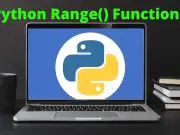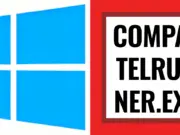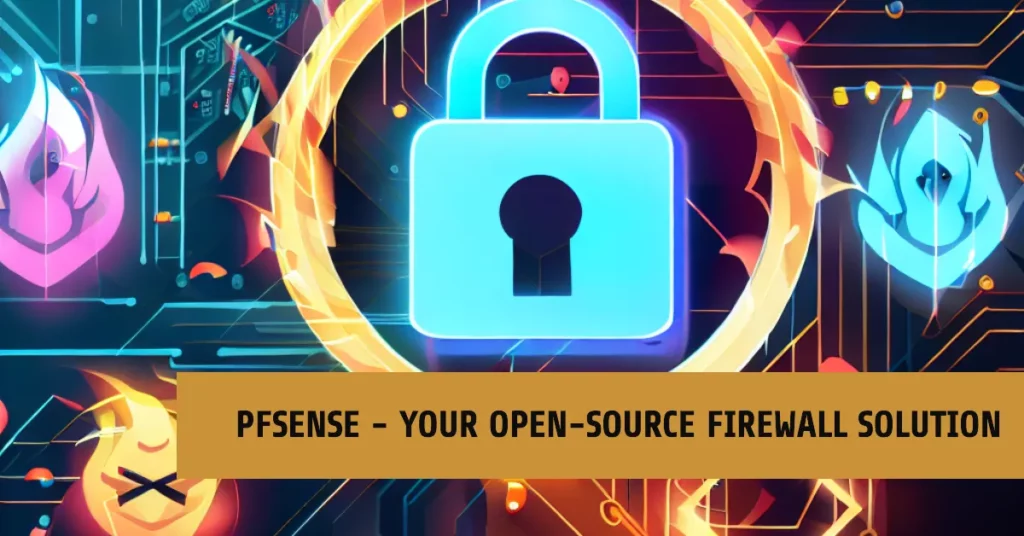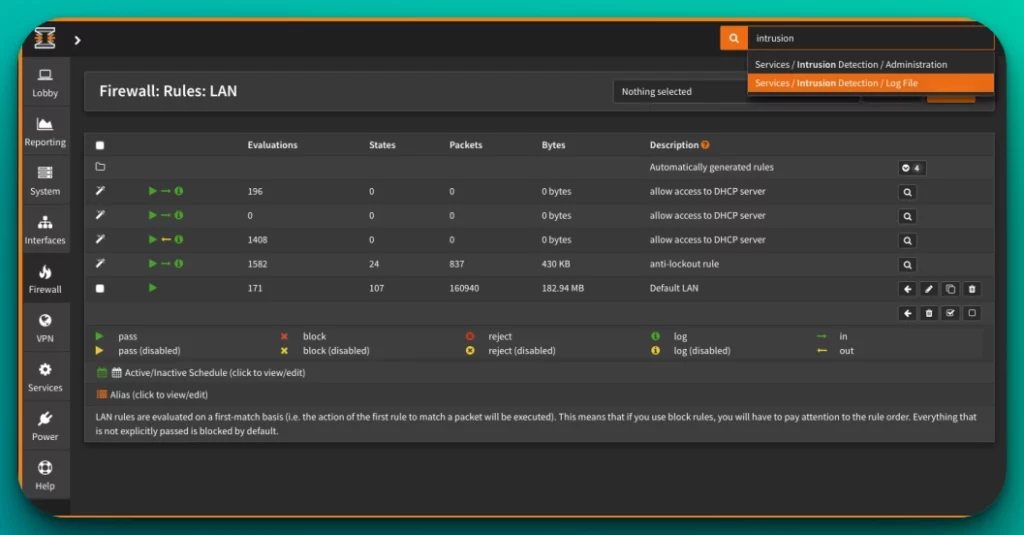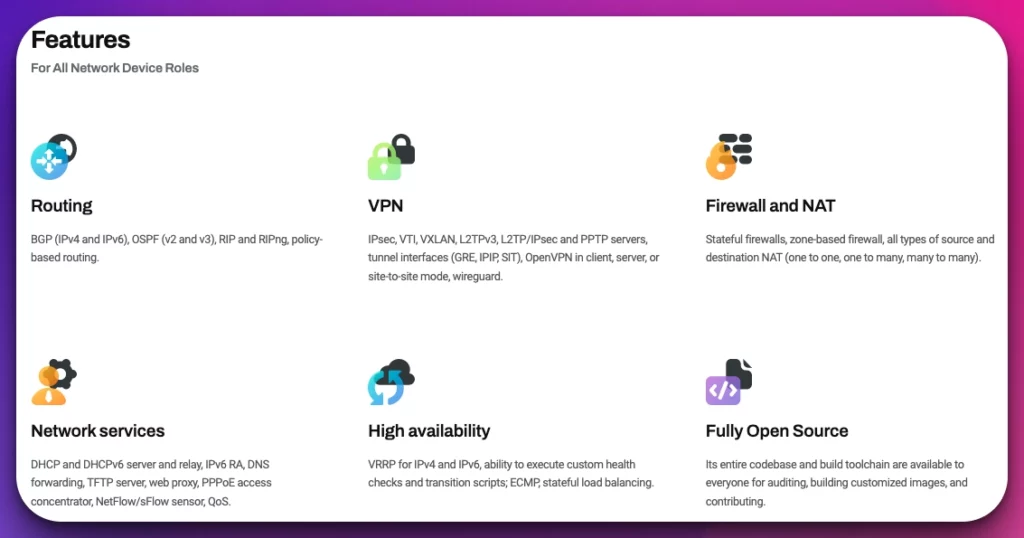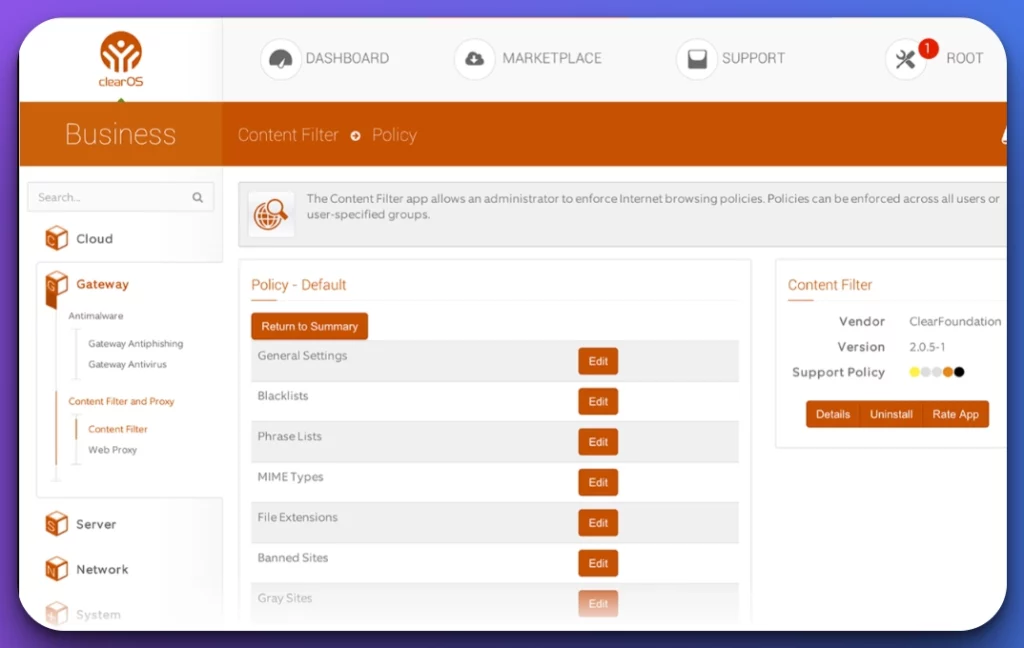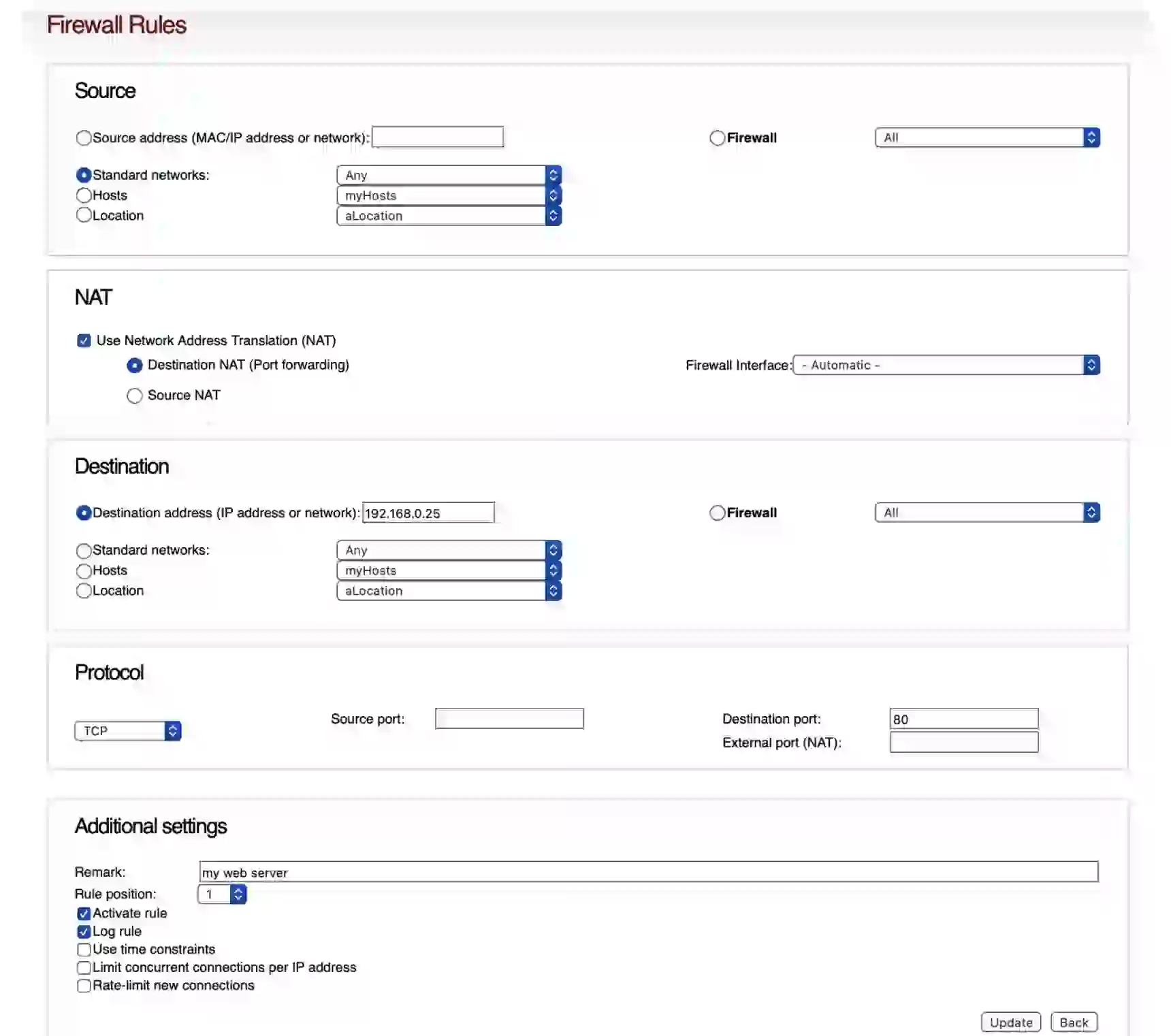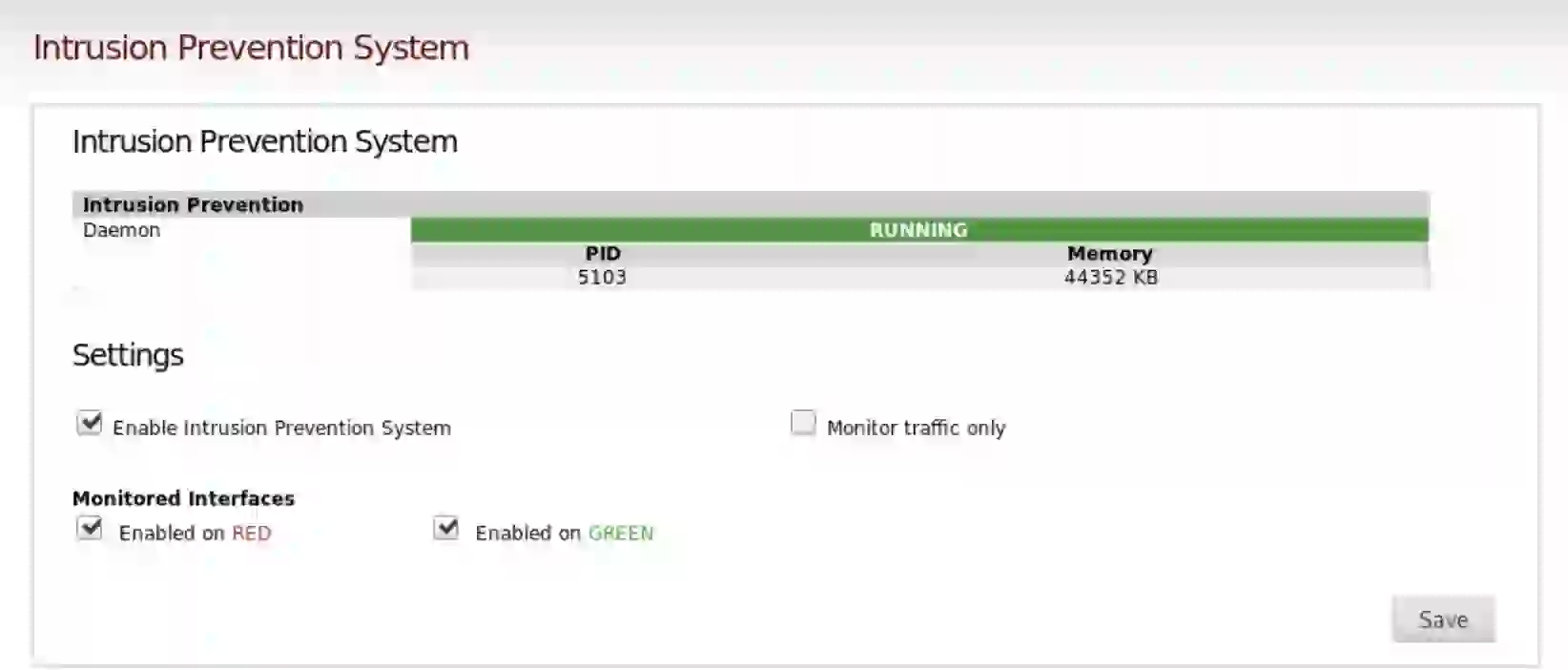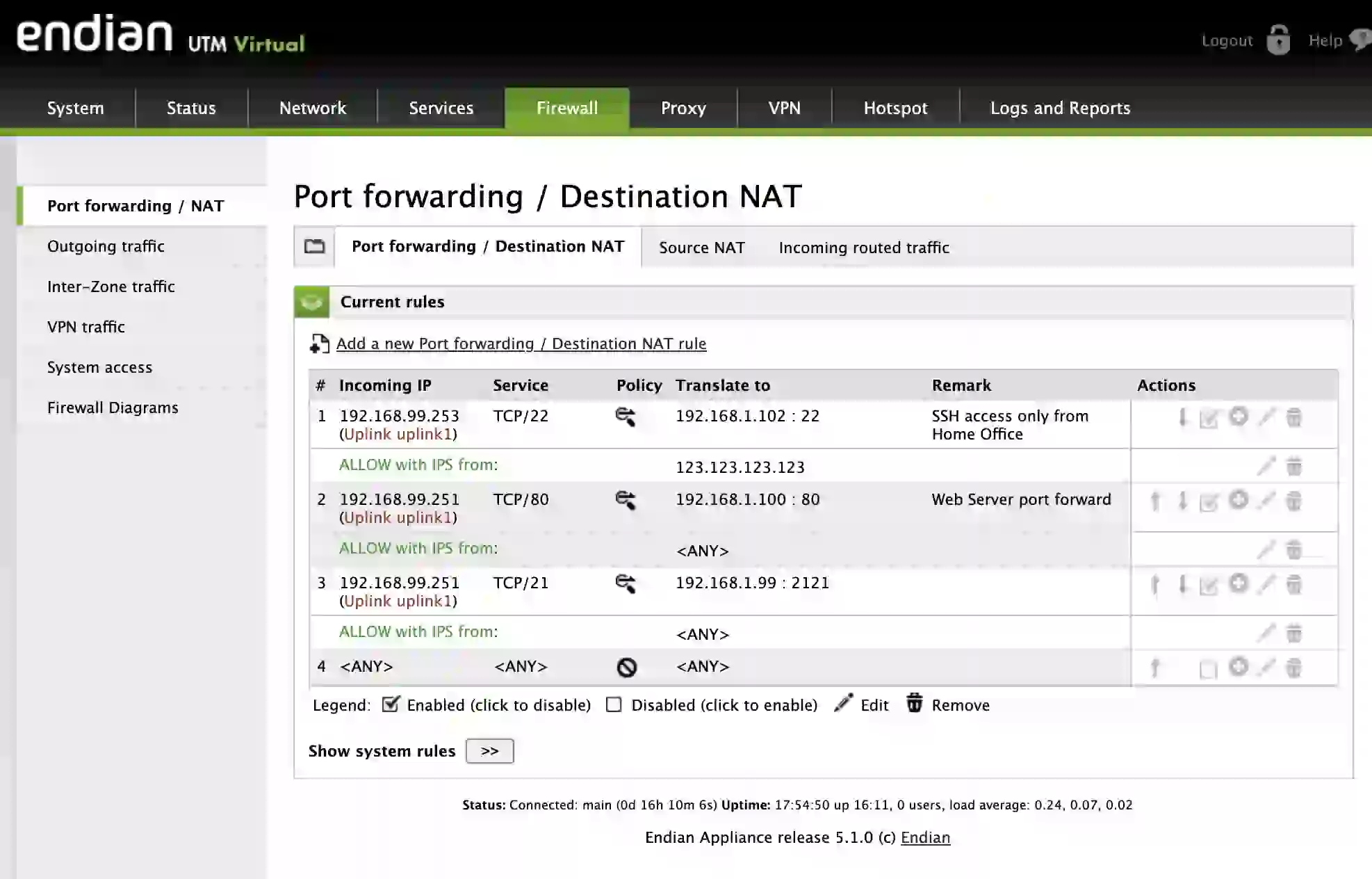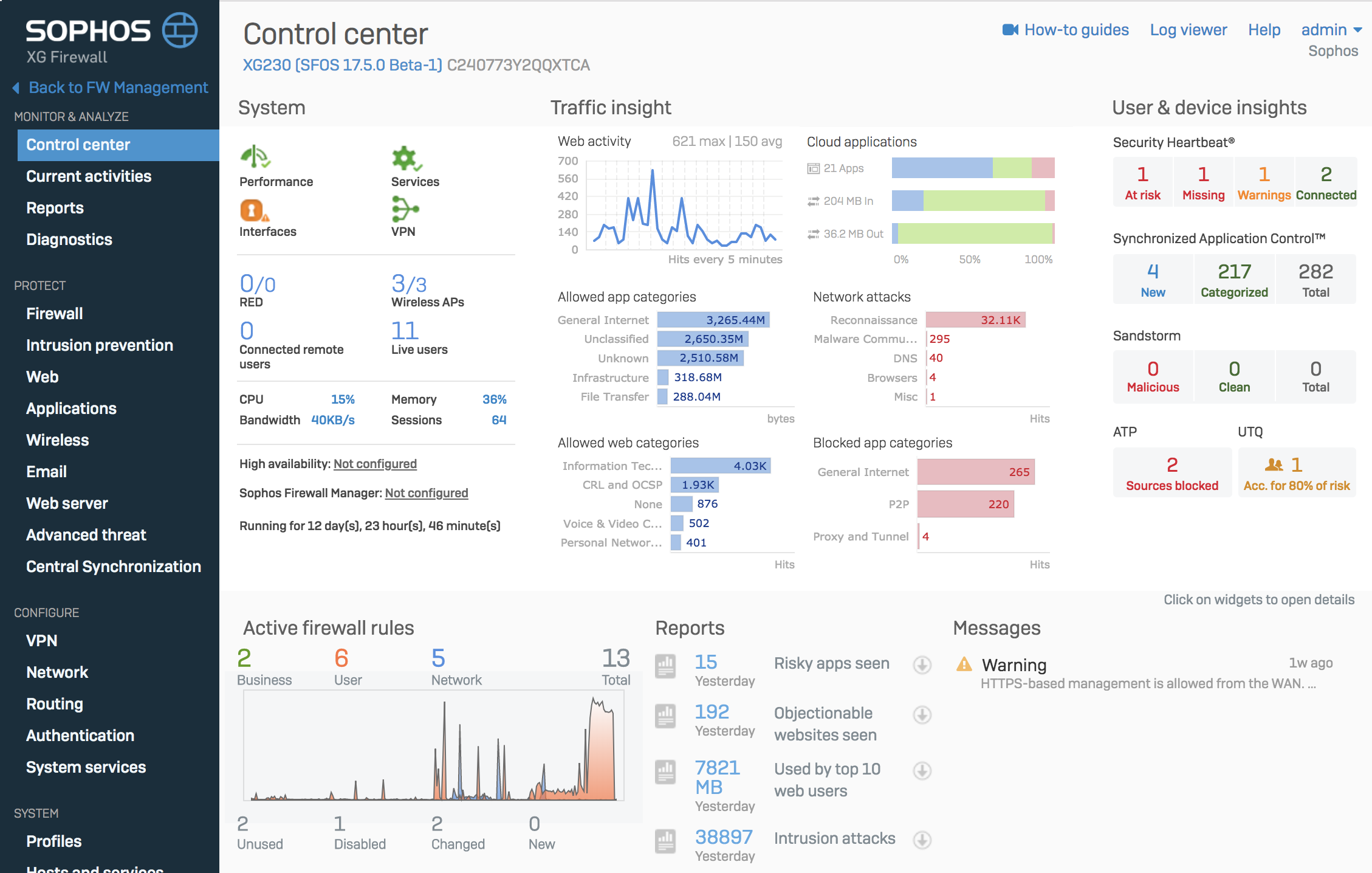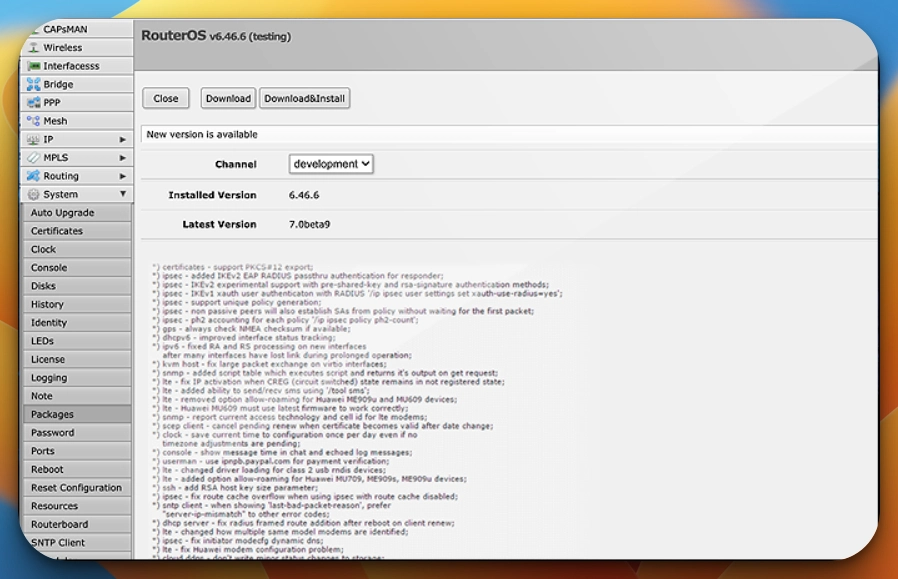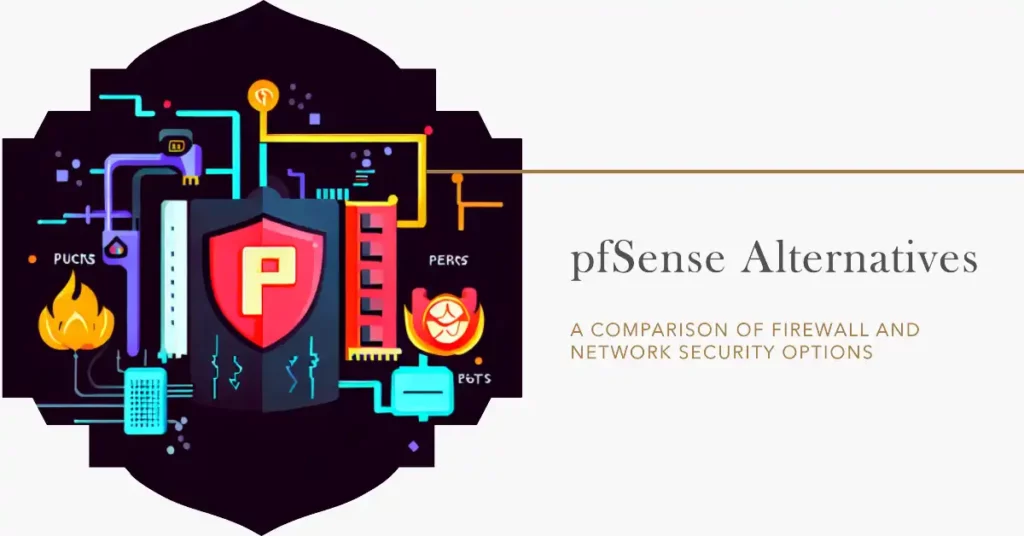Managing your network security can be a daunting task. You’ve probably used or heard of pfSense, an open-source firewall, and router that has been an industry standard for years.
It offers extensive features and a robust system that caters to the needs of different users. However, it’s not always the best fit for everyone.
The high level of complexity, the requirement for hardware proficiency, and the steep learning curve can make it challenging for small business owners or beginners in network security.
Struggling with pfSense’s intricate setup can lead to misconfiguration and potential security loopholes. Not being able to maximize its features due to limited knowledge or resources could leave your network vulnerable.
Worse, time and energy spent mastering pfSense could be used in more crucial business areas. Wouldn’t it be great if there were simpler, more user-friendly alternatives that still offered robust security measures?
Well, you’re in luck. This comprehensive guide will delve into some of the most effective pfSense alternatives. We’ll discuss their features, how they compare to pfSense, and why they might better fit your network security needs.
From user-friendly interfaces to efficient customer support, these alternatives promise reliable solutions as powerful as pfSense but less complex to manage.
Let’s help simplify your network security management while maintaining a strong defense system.
What is pfsense?💁
pfSense, a renowned open-source firewall solution, has gained significant popularity among network administrators and security enthusiasts. Combining the power of a firewall and a router, pfSense provides a robust and flexible platform for securing and managing network traffic.
At its core, pfSense is built on the FreeBSD operating system and offers extensive features tailored to meet diverse network security requirements.
Its modular design allows for easy customization and scalability, making it suitable for small home networks and large enterprise environments. One of the key reasons behind pfSense’s popularity is its open-source nature, which grants users access to its source code.
This transparency fosters a vibrant and supportive community that contributes to the platform’s continuous improvement. The active user community offers assistance, shares knowledge, and develops additional features and packages that enhance the functionality of pfSense.
With pfSense, administrators can create firewall rules, implement VPN connectivity, monitor network traffic through traffic shaping and packet filtering, and establish high-availability setups for mission-critical environments.
Furthermore, pfSense supports various security protocols and can integrate with external threat intelligence sources to bolster network defenses.
In summary, pfSense has become a widely recognized open-source firewall solution due to its extensive feature set, scalability, and the collaborative spirit of its user community.
Its versatility and robustness make it a compelling choice for organizations and individuals seeking a reliable, customizable, cost-effective network security and management solution.
Factors to Consider When Evaluating Firewall Solutions
When evaluating firewall solutions, it is crucial to consider various factors to ensure you select the most suitable option for your network security needs. By carefully assessing these key aspects, you can make an informed decision that aligns with your organization’s requirements and objectives.
Scalability plays a vital role in determining whether a firewall solution can handle the increasing demands of your network. Consider the solution’s ability to adapt and expand alongside your network’s growth to avoid potential bottlenecks or performance issues.
The ease of use is another critical factor to consider. A firewall solution should have an intuitive and user-friendly interface that allows administrators to navigate and configure settings efficiently. This helps reduce the learning curve and streamlines day-to-day management tasks.
The feature set is an essential consideration when evaluating firewall solutions. Assess whether the solution offers the necessary capabilities to meet your specific security requirements, such as intrusion detection, content filtering, advanced threat protection, or application-level controls.
The availability of community support is also worth evaluating. A vibrant user community can provide valuable insights, troubleshooting assistance, and knowledge-sharing resources. It enhances the overall user experience and can be particularly useful in complex deployments.
Lastly, consider the firewall solution’s cost, including upfront expenses and ongoing maintenance. Evaluate the pricing models, licensing options, and additional costs associated with the solution’s features or support.
Considering these factors, you can evaluate firewall solutions comprehensively and choose the one that best meets your organization’s unique requirements while ensuring robust network security and protection against modern threats.
Here, we have prepared a list of some of the best ones –
Best pfsense Alternatives For Robust Network Security
1. OPNsense
In network security and firewall solutions, OPNsense emerges as an exemplary choice when seeking an alternative to the well-established pfSense platform.
Offering a robust feature set, enhanced performance, and a vibrant community, OPNsense has garnered attention and acclaim among IT professionals and security enthusiasts.
One of the most compelling aspects of OPNsense is its exceptional flexibility. With its modular architecture, OPNsense allows users to customize and tailor their firewall implementation to suit their unique requirements.
Whether configuring virtual private networks (VPNs), creating intricate firewall rules, or implementing powerful intrusion detection and prevention systems (IDS/IPS), OPNsense empowers administrators with tools.
Moreover, OPNsense excels in terms of user-friendliness. Its intuitive web-based interface and comprehensive documentation facilitate the management and configuration of network settings. This accessibility ensures that even individuals without extensive technical expertise can harness the full potential of OPNsense’s capabilities.
While pfSense has enjoyed its status as a leading open-source firewall platform, OPNsense brings a fresh perspective and continually pushes the boundaries of innovation.
Regular updates and feature enhancements keep OPNsense at the forefront of network security advancements, addressing emerging threats and evolving technology requirements. The dedicated community behind OPNsense is pivotal in driving its growth, actively contributing to its development, and extending its functionality.
Regarding performance, OPNsense showcases remarkable efficiency, enabling seamless network operations even under high loads. With its state-of-the-art packet filtering and traffic shaping capabilities, OPNsense optimizes network traffic to deliver superior performance and reliability.
To summarize, as a pfSense alternative, OPNsense emerges as a compelling choice, providing unparalleled flexibility, user-friendliness, continuous innovation, and exceptional performance.
Whether for small businesses, enterprises, or home network enthusiasts, OPNsense offers a secure and scalable solution that meets the diverse needs of today’s ever-evolving digital landscape.
Pros:-
Flexibility: OPNsense offers a modular architecture, allowing users to customize their firewall implementation according to their specific requirements. This flexibility ensures organizations can create tailored solutions that align with their unique network security needs.
User-Friendliness: OPNsense features an intuitive web-based interface and comprehensive documentation, making it accessible to users of varying technical expertise. The user-friendly interface simplifies the management and configuration of network settings, enabling administrators to navigate and utilize its features effectively.
Continuous Innovation: OPNsense stands out for its commitment to continuous improvement. Regular updates and feature enhancements keep the platform at the forefront of network security advancements, ensuring users can benefit from the latest tools and technologies to address emerging threats.
Active Community: OPNsense boasts a vibrant and dedicated community of users and developers. This active community contributes to the platform’s ongoing development, providing valuable insights, support, and extensions to enhance its functionality and address specific use cases.
Performance: OPNsense delivers impressive performance, even under high network loads. With its state-of-the-art packet filtering and traffic shaping capabilities, OPNsense optimizes network traffic, ensuring smooth operations and reliable connectivity.
Cons:-
Learning Curve: While OPNsense offers a user-friendly interface, newcomers may still face a learning curve, especially if transitioning from pfSense or other firewall solutions. Familiarizing oneself with OPNsense’s unique terminology and interface may require initial effort and training.
Limited Third-Party Support: Compared to pfSense, OPNsense may have fewer third-party integrations and add-ons. While OPNsense does offer a range of essential features and plugins, users may find certain niche or specialized functionalities lacking or requiring additional development.
Community Size: Although OPNsense has a dedicated community, it may not be as extensive as pfSense’s community. This difference in community size can affect the availability of user-generated resources, community-driven support, and the overall breadth of knowledge exchange.
Migration Challenges: For organizations already using pfSense, migrating to OPNsense can present challenges regarding configuration compatibility and transitioning existing settings and rules. Proper planning and testing are necessary to ensure a smooth transition from pfSense to OPNsense.
Opnsense vs pfsense:-
If you prefer a more modern interface and need specific features such as a captive portal, OPNsense may be the better choice. If you prioritize community support and stability, pfSense may be a better fit.
Below is a detailed comparison chart of pfSense vs Opnsense:-
| Criteria | OPNsense | pfSense |
|---|---|---|
| License | Open Source | Open Source |
| Developer | Deciso BV | Electric Sheep Fencing, LLC |
| Initial Release | 2015 | 2004 |
| Latest Version | 21.1 | 2.5.0 |
| Operating System | FreeBSD | FreeBSD |
| Web Interface | MVC Framework | WebGUI |
| Packages | 100+ | 3000+ |
| Customization | Highly Customizable | Customizable |
| Updates | Automatic and Manual Updates | Manual Updates |
| Firewall | Stateful Firewall with ACLs | Stateful Firewall with ACLs |
| VPN | OpenVPN, IPSec, WireGuard | OpenVPN, IPSec |
| Multi-WAN | Yes | Yes |
| High Availability | Yes | Yes |
| IDS/IPS | Suricata, Snort | Suricata, Snort |
| Captive Portal | Yes | Yes |
| Proxy | Squid | Squid |
| DNS | Unbound, DNS Resolver | Unbound, DNS Resolver |
| Reporting | Grafana, Zabbix | PRTG, Nagios |
| Active Directory Integration | Yes | Yes |
| Price | Free | Free |
pfsense vs opnsense performance:-
Both pfSense and OPNsense have similar performance capabilities, but OPNsense has a more efficient and faster packet processing engine, making it better suited for high-performance networks.
here’s a table summarizing the differences between pfSense and OPNsense performance:-
| Performance Metrics | pfSense | OPNsense |
|---|---|---|
| Hardware Requirements | 4GB RAM (recommended) | 2GB RAM (recommended) |
| CPU Utilization | Low | More efficient and faster packet processing engine |
| User Interface | Older and less user-friendly | Modern and user-friendly |
| Plugins/Add-ons | Rich ecosystem of plugins and add-ons | More extensive selection of plugins and add-ons |
Ideal User Scenarios of OPNsense:-
OPNsense, a versatile open-source firewall, and routing platform, offers a myriad of ideal user scenarios for individuals and organizations seeking robust network security and enhanced control over their network infrastructure.
One prominent user scenario where OPNsense shines is in small to medium-sized businesses. As a comprehensive firewall solution, OPNsense provides an effective defense against cyber threats and unauthorized access attempts.
Its sophisticated intrusion detection and prevention system (IDPS) is a proactive shield, continuously monitoring network traffic for suspicious activities. With OPNsense’s advanced forward and reverse proxy capabilities, businesses can ensure secure web browsing and protect sensitive data from external threats.
The platform’s user-friendly interface facilitates easy management and configuration of firewall rules, enabling administrators to customize security policies to suit their specific needs.
For individuals with a penchant for advanced network security, OPNsense is an ideal home network security appliance. Leveraging the power of virtual private networks (VPNs), users can establish secure connections to remote networks, safeguarding their online activities from prying eyes.
OPNsense’s traffic shaping feature allows users to prioritize bandwidth usage, ensuring optimized network performance for latency-sensitive applications like online gaming or video conferencing.
Another ideal user scenario for OPNsense is in educational institutions. Its robust content filtering capabilities, OPNsense enable administrators to control and monitor internet access, creating a safe online environment for students and faculty.
The platform’s comprehensive URL filtering feature allows educational institutions to restrict access to inappropriate or non-educational websites, ensuring a productive learning environment.
Additionally, OPNsense’s support for multi-WAN configurations ensures reliable and uninterrupted connectivity, a crucial requirement for institutions relying heavily on online resources and services.
In conclusion, OPNsense caters to a diverse range of ideal user scenarios, from small businesses needing robust network security to privacy-conscious individuals and educational institutions seeking comprehensive control over their networks.
With its extensive feature set, user-friendly interface, and powerful security measures, OPNsense empowers users to fortify their networks against evolving cyber threats while optimizing network performance for enhanced productivity.
2. VyOS
Regarding robust and versatile network security solutions, VyOS emerges as a compelling alternative to the popular pfSense platform.
With its extensive feature set, advanced routing capabilities, and open-source nature, VyOS has established itself as a reliable choice for organizations seeking a flexible and scalable firewall solution.
One of the key strengths of VyOS lies in its powerful routing capabilities. Designed to handle complex network environments, VyOS offers a wide range of routing protocols, including OSPF, BGP, and RIP, enabling seamless integration into diverse network architectures.
Whether setting up dynamic routing or implementing advanced routing policies, VyOS empowers administrators with the tools to manage their network traffic efficiently.
Furthermore, VyOS provides comprehensive security features to safeguard network resources. It supports various VPN protocols, including IPsec, OpenVPN, and L2TP, ensuring secure communication channels for remote connectivity.
With built-in firewall functionality, VyOS enables fine-grained control over network traffic, allowing administrators to define and enforce security policies based on specific criteria.
VyOS also offers excellent scalability, making it suitable for small to large-scale deployments. Its modular design allows for the integration of additional functionality through loadable kernel modules and user space applications, expanding its capabilities beyond its core feature set. This flexibility ensures VyOS can adapt to evolving network requirements and accommodate future growth.
Another noteworthy aspect of VyOS is its active and supportive community. As an open-source project, VyOS benefits from the contributions and feedback of a dedicated user base.
The community actively participates in improving the platform, sharing knowledge, and providing assistance through forums and online resources. This collaborative ecosystem enhances the overall experience of using VyOS and fosters continuous development.
In summary, as a pfSense alternative, VyOS offers an impressive array of features, advanced routing capabilities, and a thriving community.
With its emphasis on flexibility, security, and scalability, VyOS is well-suited for organizations seeking a versatile firewall solution that can adapt to their evolving network needs.
Pros:-
Advanced Routing Capabilities: VyOS shines in terms of its advanced routing capabilities, supporting a wide range of protocols such as OSPF, BGP, and RIP. This enables seamless integration into complex network environments and facilitates efficient traffic management.
Comprehensive Security Features: VyOS provides comprehensive security features, including support for various VPN protocols like IPsec, OpenVPN, and L2TP. Its built-in firewall functionality allows for fine-grained control over network traffic, ensuring robust security measures.
Scalability and Flexibility: VyOS offers excellent scalability and flexibility with its modular design. Additional functionality can be added through loadable kernel modules and user space applications, allowing customization and expansion of its capabilities to meet specific requirements.
Active Community Support: VyOS benefits from an active and supportive community. Users actively contribute to the project, provide assistance, and share knowledge through forums and online resources. This vibrant community ensures continuous improvement and enhances the overall user experience.
Open-Source Nature: As an open-source platform, VyOS provides transparency and allows users to modify and customize the software according to their needs. This allows for greater control and adaptability in managing network infrastructure.
Cons:-
Learning Curve: VyOS may have a steeper learning curve than other firewall solutions, especially for users less familiar with command-line interfaces and networking concepts. Adequate training and familiarity with networking principles may be required to leverage VyOS’s capabilities fully.
Limited User Interface: While VyOS does offer a web-based interface for configuration, it is not as feature-rich or user-friendly as some other firewall platforms. Users may need to rely more on command-line interface (CLI) operations, which can be challenging for those who prefer graphical interfaces.
Third-Party Integration: VyOS may have fewer third-party integrations and plugins available compared to some alternative solutions. This may limit specialized functionalities or require additional development to meet specific requirements.
Community Size: While VyOS has an active community, it may not be as extensive as other open-source projects. This could potentially impact the availability of user-generated resources and community-driven support.
Documentation and Support: While VyOS provides documentation, some users may find it lacks in-depth explanations or examples for specific use cases. Timely and comprehensive support may also depend on the availability of community members or professional support services.
Considering these pros and cons in the context of your specific network security requirements and organizational needs is important when evaluating VyOS as a pfSense alternative.
pfSense vs VyOS:-
While pfSense excels in user-friendliness and a wide range of security features, VyOS shines in advanced routing and networking scenarios. pfSense is often the preferred choice for those seeking an all-in-one security solution, whereas VyOS caters to users with specialized routing requirements.
Choosing pfSense and VyOS depends on your network infrastructure’s specific needs and objectives. Consider the complexity of your network, desired security features, and level of expertise required for management before making an informed decision.
| Features | pfSense | VyOS |
|---|---|---|
| Firewall | ✔️ Wide range of firewall capabilities | ✔️ Firewall functionalities |
| VPN | ✔️ Supports various VPN protocols | ✔️ VPN capabilities |
| Traffic Shaping | ✔️ Traffic shaping features | ❌ Limited traffic shaping |
| Intrusion Detection | ✔️ Intrusion detection system | ❌ No built-in intrusion detection |
| Content Filtering | ✔️ Content filtering capabilities | ❌ No native content filtering |
| User Interface | ✔️ User-friendly web-based console | ❌ Command-line interface (CLI) |
| Routing | ❌ Basic routing functionalities | ✔️ Advanced routing protocols (BGP, OSPF, VRRP) |
| Scalability | ✔️ Suitable for small to medium-sized networks | ✔️ Highly scalable networks |
| Support | ✔️ Extensive community support | ✔️ Community support |
Ideal User Scenarios of VyOS:-
VyOS, a versatile open-source network operating system, caters to ideal user scenarios, offering powerful networking capabilities and robust security features for individuals and organizations.
One key user scenario where VyOS excels is in enterprise networking. With its extensive routing and switching capabilities, VyOS empowers network administrators to build and manage complex networks easily.
The platform supports advanced routing protocols such as BGP and OSPF, ensuring seamless communication between network segments. Additionally, VyOS’s VRF (Virtual Routing and Forwarding) functionality enables the creation of isolated routing domains, enhancing network security and isolation.
In cloud environments, VyOS serves as an ideal virtual router. Its lightweight and scalable nature makes it well-suited for deployments in virtualized environments, such as Amazon Web Services (AWS), Microsoft Azure, or Google Cloud Platform (GCP).
With VyOS, users can establish secure site-to-site VPN connections, enabling seamless communication between on-premises networks and cloud resources. The platform’s firewall capabilities provide granular control over inbound and outbound traffic, ensuring the security of cloud-based applications and data.
For network security enthusiasts, VyOS offers an ideal user scenario as a security appliance. Its robust firewall capabilities allow users to establish stringent security policies, enforcing traffic filtering, NAT (Network Address Translation), and stateful packet inspection.
VyOS supports integrating additional security features, such as Intrusion Detection Systems (IDS) and Intrusion Prevention Systems (IPS), fortifying the network against cyber threats.
In conclusion, VyOS caters to diverse ideal user scenarios, from enterprise networking to cloud environments and network security. Its rich feature set, including advanced routing, switching, and security functionalities, positions VyOS as a reliable and flexible network operating system.
Whether in large-scale enterprise deployments or virtualized cloud environments, VyOS empowers users to build and manage robust, secure, and scalable networks.
3. ClearOS
ClearOS is a compelling alternative to the popular platform pfSense in network security and routing solutions.
Designed with the needs of small to medium-sized businesses in mind, ClearOS offers a feature-rich and user-friendly environment to secure and manage network infrastructures.
At its core, ClearOS is built on a powerful Linux-based operating system, providing a solid foundation for network operations. Its stability and security features make it an excellent choice for businesses seeking a reliable and resilient platform.
One of the key advantages of ClearOS is its emphasis on simplicity. The intuitive web-based interface enables administrators to easily navigate various configurations and settings, promoting efficiency and ease of use.
The well-designed interface presents a wealth of information in a clear and organized manner, empowering administrators to manage their networks effectively.
A standout feature of ClearOS is its Marketplace, offering a wide array of pre-integrated applications. This unique ecosystem allows users to extend their network infrastructure’s functionality seamlessly.
Whether deploying a robust firewall, setting up a secure VPN, implementing antivirus and intrusion prevention measures, or enforcing content filtering, ClearOS offers diverse options. The Marketplace ensures businesses can tailor their security setup to meet their specific requirements without the hassle of extensive integration.
ClearOS also provides a comprehensive reporting and logging system, enabling administrators to gain valuable insights into network traffic and security events.
By monitoring and analyzing these logs, administrators can proactively identify potential threats and take appropriate measures to mitigate risks. This level of visibility enhances overall network security, safeguarding critical business resources.
The user-friendly approach of ClearOS extends to its wizard-based setups, simplifying the initial configuration process. Those with limited technical expertise can quickly deploy and manage secure network infrastructure. The guided wizards walk users through the necessary steps, ensuring a smooth and hassle-free experience.
While pfSense has established itself as a robust network security solution, ClearOS presents itself as a compelling alternative, particularly for organizations seeking a user-friendly platform with extensive customization options.
ClearOS offers a vibrant and active community that actively contributes to the development and enhancement of the platform. This collaborative environment ensures ongoing support, updates, and a wide range of resources to tap into.
In conclusion, ClearOS emerges as a worthy pfSense alternative, especially for small to medium-sized businesses looking for a comprehensive and user-friendly network security and routing solution.
Its Linux-based foundation, intuitive interface, Marketplace, and emphasis on simplicity make it a compelling choice. By choosing ClearOS, businesses can enhance their network security posture, streamline management processes, and have peace of mind knowing that their critical infrastructure is well-protected.
Pros:-
User-Friendly Interface: ClearOS offers an intuitive web-based interface that simplifies network configuration and management, making it accessible even for users with limited technical expertise.
Marketplace: ClearOS features a Marketplace with pre-integrated applications, allowing users to easily extend the functionality of their network infrastructure with firewall, VPN, antivirus, intrusion prevention, and content filtering capabilities, among others.
Stability and Security: Built on a Linux-based operating system, ClearOS provides a stable and secure foundation for network operations, ensuring reliability and protection against threats.
Comprehensive Reporting and Logging: ClearOS offers a robust reporting and logging system, enabling administrators to gain valuable insights into network traffic and security events, facilitating proactive threat identification and risk mitigation.
Wizard-Based Setups: ClearOS simplifies the initial configuration process with guided wizards, making it easier for users to set up and manage secure network infrastructure.
Active Community: ClearOS has a vibrant community that actively contributes to its development and provides ongoing support, updates, and resources for users.
Cons:-
Advanced Routing Functionality: While ClearOS offers solid routing capabilities, it may not have the same advanced routing protocols and features as pfSense, making it more suitable for simpler network environments.
Limited Customization: Although ClearOS provides a Marketplace for extending functionality, its customization options may be more limited than pfSense, which offers extensive flexibility and advanced configuration options.
Enterprise-Level Features: ClearOS is primarily designed for small to medium-sized businesses, so it may not offer the same enterprise-level features and scalability as pfSense for larger organizations with complex network requirements.
Less Extensive Documentation: While ClearOS has a supportive community, its documentation may not be as comprehensive as pfSense’s, potentially requiring users to rely more on community resources for troubleshooting and configuration assistance.
Hardware Compatibility: ClearOS may have more limited hardware compatibility than pfSense, which has extensive support for a wide range of network hardware and appliances.
pfSense vs ClearOS:-
ClearOS positions itself as a comprehensive network management solution. It offers a Linux-based operating system that provides a stable foundation for network operations.
ClearOS provides an intuitive web-based interface and a Marketplace with pre-integrated applications, allowing users to extend functionality easily.
It covers essential features such as firewalling, VPN, antivirus, and intrusion prevention, making it an attractive option for small to medium-sized businesses.
Regarding customization, pfSense offers extensive flexibility and advanced configuration options, making it suitable for organizations with complex network requirements. ClearOS may have more limited customization options while providing a Marketplace for extending functionality.
Regarding documentation and support, pfSense has a well-established community and comprehensive documentation, providing users with extensive resources. ClearOS also has an active community, but its documentation may be comparatively less comprehensive.
In conclusion, pfSense and ClearOS are powerful network security and routing solutions.
pfSense shines in its robust feature set and advanced customization options, making it suitable for organizations with complex requirements.
ClearOS, on the other hand, offers a user-friendly interface, a Marketplace for easy extension of functionality, and is well-suited for small to medium-sized businesses.
Consider your specific needs, scalability requirements, and level of technical expertise before deciding between pfSense and ClearOS.
| Features | pfSense | ClearOS |
|---|---|---|
| Firewall | ✔️ Extensive firewall capabilities | ✔️ Firewall functionalities |
| VPN | ✔️ Supports various VPN protocols | ✔️ VPN capabilities |
| Traffic Shaping | ✔️ Traffic shaping features | ❌ Limited traffic shaping |
| Intrusion Detection | ✔️ Intrusion detection system | ❌ No built-in intrusion detection |
| Content Filtering | ✔️ Content filtering capabilities | ❌ No native content filtering |
| User Interface | ✔️ User-friendly web-based console | ✔️ Intuitive web-based interface |
| Customization | ✔️ Extensive flexibility and advanced configuration options | ❌ Limited customization options |
| Documentation | ✔️ Comprehensive documentation | ❌ Documentation may be less extensive |
| Scalability | ✔️ Suitable for organizations with complex network requirements | ✔️ Well-suited for small to medium-sized businesses |
| Support | ✔️ Active community and extensive resources | ✔️ Active community support |
Ideal User Scenarios of ClearOS:-
ClearOS, a comprehensive open-source operating system, offers a wide range of ideal user scenarios, providing robust network and server solutions for individuals and organizations seeking secure and reliable IT infrastructure.
One key user scenario where ClearOS excels is in small to medium-sized businesses.
With its all-in-one approach, ClearOS is an ideal server platform for these businesses, offering features such as file and print services, email and messaging, and web server hosting.
The platform’s intuitive graphical user interface simplifies administration, allowing even non-technical users to configure and manage their server infrastructure efficiently.
ClearOS acts as an ideal gateway solution for businesses needing enhanced network security. Its integrated firewall, powered by iptables, provides robust protection against external threats, while the intrusion detection and prevention system (IDPS) offers real-time monitoring and defense against network attacks.
ClearOS’s Virtual Private Network (VPN) functionality ensures secure remote access to the network, enabling employees to work from anywhere while maintaining data confidentiality.
ClearOS is an ideal user scenario in educational institutions by providing a reliable content-filtering solution. The platform’s web proxy and caching capabilities allow administrators to control and monitor internet access, ensuring a safe and productive online environment for students.
ClearOS’s bandwidth management features also help optimize network performance, ensuring smooth access to online educational resources.
ClearOS is also an excellent fit for home network enthusiasts. Its user-friendly interface and extensive networking tools allow individuals to create their own secure and customizable network infrastructure.
From network address translation (NAT) to port forwarding and dynamic DNS, ClearOS offers the flexibility and control needed to set up a reliable and efficient home network.
In conclusion, ClearOS caters to diverse ideal user scenarios, including small to medium-sized businesses, educational institutions, and home network enthusiasts.
With its comprehensive server solutions, robust security features, and user-friendly interface, ClearOS provides the foundation for building a secure, scalable, and efficient IT infrastructure.
4. IPFire
IPFire is a compelling alternative to the well-known platform pfSense in network security and routing solutions. With its feature-rich platform and emphasis on robust security, IPFire offers a comprehensive suite of tools designed to meet the needs of businesses of all sizes.
At the heart of IPFire lies a powerful Linux-based operating system, providing a solid foundation for network operations. Its reliability and performance are ideal for organizations seeking a secure and stable platform.
One of the key strengths of IPFire is its focus on security. It incorporates advanced security features, including stateful packet inspection, intrusion detection, virtual private networking (VPN), and proxy server capabilities. These features help organizations safeguard their networks and protect against emerging threats.
IPFire also excels in firewalling, offering granular control over inbound and outbound traffic. It utilizes a multi-layer firewall approach, combining technologies such as network address translation (NAT), port forwarding, and application-level filtering to ensure secure and reliable communication.
Additionally, IPFire provides a user-friendly web-based interface that simplifies configuration and management tasks. The interface presents a wealth of information and options in a clear and organized manner, enabling administrators to navigate through settings and make necessary adjustments efficiently.
Another notable feature of IPFire is its modular architecture. It offers a wide range of add-ons and extensions through its package manager, allowing users to enhance functionality and customize their security setup according to their specific requirements.
Whether implementing intrusion prevention systems, content filtering, or virtual private networks, IPFire provides a diverse ecosystem of add-ons.
While pfSense is a widely adopted platform, IPFire presents itself as a worthy alternative, particularly for organizations seeking a security-focused solution with robust features.
IPFire’s emphasis on security, user-friendly interface, and modular architecture makes it a compelling choice for businesses of all sizes.
In conclusion, if you’re looking for an alternative to pfSense that prioritizes security and offers a wide range of features, IPFire deserves serious consideration.
Its Linux-based foundation, comprehensive security capabilities, user-friendly interface, and modular architecture make it a formidable pfSense alternative.
By choosing IPFire, organizations can establish a robust and secure network infrastructure that meets their specific requirements and protects against emerging threats.
Pros:-
Robust Security Features: IPFire prioritizes security and offers advanced features such as stateful packet inspection, intrusion detection, VPN capabilities, and proxy server functionalities, providing a strong defense against emerging threats.
Granular Firewall Control: IPFire provides granular control over inbound and outbound traffic, allowing administrators to configure network address translation, port forwarding, and application-level filtering, ensuring secure and reliable communication.
User-Friendly Interface: IPFire offers a user-friendly web-based interface that simplifies configuration and management tasks, making it accessible for administrators with varying technical expertise.
Modular Architecture: IPFire’s modular architecture allows easy customization and expansion through its package manager. Users can add specific features and functionality through a wide range of add-ons and extensions to tailor their security setup to their specific requirements.
Linux-Based Foundation: Built on a Linux-based operating system, IPFire provides a stable and reliable foundation for network operations, ensuring performance and scalability.
Cons:-
Learning Curve: While IPFire offers a user-friendly interface, it may still have a learning curve for administrators unfamiliar with Linux-based systems or network security concepts.
Limited Community Support: IPFire has a smaller community than pfSense, which may result in limited resources, documentation, and community-driven support.
Hardware Compatibility: IPFire’s hardware compatibility may not be as extensive as pfSense, potentially limiting the choice of network hardware and appliances.
Enterprise-Level Features: IPFire may have limited enterprise-level features compared to pfSense, making it more suitable for small to medium-sized businesses rather than larger organizations with complex network requirements.
Updates and Upgrades: IPFire’s update and upgrade process may require more manual intervention and configuration than pfSense, which provides a streamlined update mechanism.
ipfire vs pfsense:-
Both IPFire and pfSense provide granular control over network traffic. IPFire utilizes a multi-layered approach to firewalling, incorporating technologies like network address translation (NAT), port forwarding, and application-level filtering.
Similarly, pfSense offers extensive options for configuring firewall rules, allowing administrators to fine tune their network security settings.
Regarding customizability, pfSense stands out with its extensive flexibility and advanced configuration options. It offers various features and packages tailored to specific organizational needs. IPFire, while providing a solid set of features, may have comparatively limited customization options.
Regarding performance, both IPFire and pfSense offer reliable and stable network operations. IPFire’s Linux-based foundation provides a solid platform, while pfSense’s widespread adoption and large community contribute to its stability.
Ultimately, the choice between IPFire and pfSense depends on your network infrastructure’s specific requirements and objectives.
If security is a primary concern and you value a Linux-based platform focusing on robust protection, IPFire may be the ideal choice. On the other hand, if you prioritize a user-friendly interface and extensive customizability, pfSense may better suit your needs.
In conclusion, IPFire and pfSense are powerful network security and routing solutions with their strengths. Carefully evaluating the features, customizability, and performance considerations will help you determine which platform aligns best with your organization’s requirements, ensuring a secure and efficient network infrastructure.
Here’s a detailed comparison chart of IPFire vs pfSense:-
| Feature | IPFire | pfSense |
|---|---|---|
| License | GPL | BSD |
| Firewall | Stateful packet filter | Stateful packet filter |
| VPN | OpenVPN, IPSec, WireGuard | OpenVPN, IPSec |
| Intrusion Detection/Prevention | Snort, Suricata | Snort |
| Web Proxy | Squid | Squid |
| Web Filter | URL Filter, DNS Filter | SquidGuard |
| Bandwidth Management | tc (traffic control) | pf (packet filter) |
| High Availability | Redundant firewall cluster | CARP |
| DNS | DNS caching, DNSSEC | DNS forwarding, DNSSEC |
| DHCP | DHCP server, DHCP relay | DHCP server, DHCP relay |
| Authentication | Local, RADIUS, LDAP, Active Directory | Local, RADIUS, LDAP, Active Directory |
| Hardware Requirements | Minimal requirements: 1 GHz CPU, 1 GB RAM, 4 GB disk space | Minimal requirements: 500 MHz CPU, 512 MB RAM, 8 GB disk space |
| User Interface | Web interface | Web interface |
| Community Support | Active community, user forum, wiki, mailing lists | Active community, user forum, wiki, mailing lists |
| Commercial Support | Available through third-party companies | Available through third-party companies |
Ideal User Scenarios of IPFire
IPFire, a powerful and flexible open-source firewall distribution, caters to a diverse range of ideal user scenarios. With its robust features and cutting-edge capabilities, IPFire empowers organizations and individuals to safeguard their networks and fortify their digital infrastructure.
Let’s delve into some of the key ideal user scenarios of IPFire and explore how this exceptional firewall solution caters to specific needs.
Small and Medium-Sized Enterprises (SMEs): For SMEs seeking a comprehensive and cost-effective network security solution, IPFire fits the bill perfectly.
It’s modular design and intuitive interface allow SMEs to set up and manage their firewall infrastructure easily. IPFire’s advanced security features, including intrusion detection and prevention, web proxying, and VPN connectivity, provide SMEs with a robust defense against cyber threats.
Home Networks: IPFire is equally suitable for securing home networks, providing individuals peace of mind and enhanced control over their digital environments.
With IPFire, users can monitor and regulate network traffic, filter unwanted content, and implement parental controls. Its easy-to-use web interface and extensive documentation make it accessible even for non-technical users.
Remote Workers: In the era of remote work, IPFire is invaluable in ensuring secure connectivity for employees outside the traditional office environment.
By leveraging IPFire’s VPN capabilities, remote workers can establish encrypted connections to their corporate networks, protecting sensitive data and mitigating the risk of unauthorized access.
Educational Institutions: IPFire caters to the specific security requirements of educational institutions, providing a robust firewall solution that safeguards networks and protects sensitive student and faculty data.
With features like content filtering, bandwidth management, and firewall rules, IPFire enables educational institutions to maintain a secure and productive digital learning environment.
IoT Security: The proliferation of the Internet of Things (IoT) devices calls for enhanced network security measures. IPFire excels in this domain by offering comprehensive IoT security solutions.
With its advanced packet inspection capabilities and the ability to segment IoT devices into separate network zones, IPFire protects against potential IoT vulnerabilities and helps prevent unauthorized access to critical systems.
IPFire’s versatility, scalability, and rich feature set make it an ideal choice for many user scenarios. Whether you are a small business owner, a remote worker, or an educational institution, IPFire empowers you to bolster your network security and safeguard your digital assets.
Explore the extensive capabilities of IPFire and embark on a journey toward a more secure digital future.
5. Endian Firewall
Regarding network security and firewall solutions, Endian Firewall is a strong alternative to the popular platform pfSense. With its comprehensive feature set and focus on robust security, Endian Firewall offers a reliable and user-friendly solution for businesses of all sizes.
Endian Firewall’s core lies in a Linux-based operating system, providing a solid foundation for network operations. This ensures stability, performance, and compatibility with various hardware platforms.
One of the key strengths of Endian Firewall is its emphasis on security. It incorporates advanced features such as stateful packet inspection, intrusion detection and prevention, virtual private networking (VPN), and web content filtering. These capabilities enable organizations to build secure network infrastructure and protect against evolving threats.
Endian Firewall provides a graphical user interface that simplifies configuration and management tasks. The intuitive interface allows administrators to easily navigate various settings and options, facilitating efficient network administration.
Regarding VPN capabilities, Endian Firewall supports various protocols, including IPsec, OpenVPN, and PPTP. This enables secure remote access and site-to-site connectivity, making it suitable for businesses with distributed networks or remote workforces.
Endian Firewall also offers web content filtering features, allowing administrators to control and monitor internet access. This helps organizations enforce acceptable use policies, protect against malware and malicious websites, and optimize network bandwidth.
Moreover, Endian Firewall supports high availability and load balancing configurations, ensuring network reliability and scalability. This is particularly beneficial for organizations with mission-critical applications that require uninterrupted connectivity.
While pfSense has garnered a strong reputation, Endian Firewall is a compelling alternative, especially for businesses seeking a user-friendly platform with comprehensive security features. Endian Firewall’s focus on security, intuitive interface, and scalability make it a viable choice for organizations of all sizes.
In conclusion, if you are searching for an alternative to pfSense that emphasizes security and offers ease of use, Endian Firewall is worth considering.
Its Linux-based foundation, comprehensive security features, user-friendly interface, and support for VPN and web content filtering make it a robust solution for building and maintaining a secure network infrastructure.
By choosing Endian Firewall, organizations can enhance their network security, streamline management processes, and gain peace of mind knowing that their critical assets are well-protected.
Pros:-
Robust Security Features: Endian Firewall offers advanced security features such as stateful packet inspection, intrusion detection and prevention, VPN capabilities, and web content filtering, providing a comprehensive defense against evolving threats.
User-Friendly Interface: Endian Firewall’s graphical user interface simplifies configuration and management tasks, making it accessible to administrators with varying technical expertise.
Linux-Based Foundation: Built on a Linux-based operating system, Endian Firewall provides stability, compatibility, and performance, ensuring a reliable network infrastructure.
VPN Support: Endian Firewall supports various VPN protocols, allowing for secure remote access and site-to-site connectivity, enabling businesses to securely connect distributed networks and remote workers.
Web Content Filtering: Endian Firewall’s web content filtering features enable administrators to control and monitor internet access, enforce acceptable use policies, protect against malware, and optimize network bandwidth.
High Availability and Load Balancing: Endian Firewall supports high availability and load balancing configurations, ensuring network reliability and scalability, which benefits organizations with mission-critical applications.
Cons:-
Customization Limitations: Endian Firewall may have comparatively limited customization options compared to pfSense, which may pose challenges for organizations with specific or complex network requirements.
Smaller Community: Endian Firewall may have a smaller community compared to pfSense, which can result in fewer resources, documentation, and community-driven support.
Enterprise-Level Features: While Endian Firewall offers robust security features, it may have limited enterprise-level features compared to pfSense, making it more suitable for small to medium-sized businesses.
Hardware Compatibility: Endian Firewall’s hardware compatibility may not be as extensive as pfSense, potentially limiting the choice of network hardware and appliances.
Updates and Upgrades: Endian Firewall’s update and upgrade process may require more manual intervention and configuration than pfSense, which provides a streamlined update mechanism.
Live Demo:-
https://demo.endian.com/
Username: admin
Password: efw_demo
pfsense vs Endian Firewall:-
When comparing pfSense and Endian Firewall, it is essential to consider several factors. Ease of use plays a significant role, especially for organizations with limited technical expertise.
While both solutions provide intuitive web-based interfaces for configuration, pfSense’s user-friendly GUI stands out, offering a streamlined experience for network administrators.
Moreover, customizability is a key aspect when evaluating firewall solutions. pfSense’s extensive package repository, known as the pfSense Package Manager, enables administrators to expand the functionality of their firewalls by adding modules such as Snort IDS/IPS, Squid proxy, or OpenVPN.
This flexibility caters to the diverse needs of different organizations. Although not as extensible as pfSense, Endian Firewall offers comprehensive built-in features, making it suitable for organizations seeking a turnkey solution.
In terms of performance and scalability, both pfSense and Endian Firewall excel. However, pfSense’s ability to efficiently handle high network loads, thanks to its multi-threading support and optimized architecture, gives it an edge over Endian Firewall in demanding environments.
Additionally, pfSense’s active community and regular updates ensure that the firewall remains up-to-date with the latest security patches and features.
In conclusion, pfSense and Endian Firewall are solid options for network security and firewall needs. While pfSense shines in terms of customizability and performance, Endian Firewall offers a comprehensive suite of built-in features and simplified management.
Assessing your organization’s specific requirements and priorities will help determine which solution best aligns with your network security strategy.
here is a comparison table between pfSense and Endian:-
| Feature | pfSense | Endian Firewall |
|---|---|---|
| Architecture | FreeBSD-based | Linux-based |
| Packet Filtering | Advanced capabilities | Robust firewall rules |
| Customizability | Extensive package repository | Limited extensibility |
| User-Friendly GUI | Highly intuitive | Intuitive interface |
| Unified Threat Management (UTM) | Partially | Comprehensive |
| Performance | Efficient in high loads | Strong performance |
| Scalability | Scalable architecture | Scalable infrastructure |
| Community Support | Active community | Community-driven |
| Regular Updates | Regularly updated | Regular updates |
Ideal User Scenarios of Endian Firewall
In network security, Endian Firewall is a versatile and powerful solution that caters to a diverse range of ideal user scenarios.
With its comprehensive features and robust capabilities, Endian Firewall empowers organizations to fortify their digital infrastructure and protect their networks from threats.
Let’s explore some of the key ideal user scenarios of Endian Firewall and understand how this exceptional firewall solution addresses specific needs.
Small and Medium-Sized Businesses (SMBs): Endian Firewall is an ideal choice for SMBs looking for an all-in-one security solution.
Its unified threat management (UTM) features combine essential security functions, including firewall protection, intrusion detection and prevention, virtual private networking (VPN), and web filtering, into a single, easy-to-use platform. SMBs can efficiently manage their network security while ensuring compliance with industry regulations.
Enterprise Networks: With its scalability and enterprise-grade features, Endian Firewall caters to the complex security requirements of large organizations.
It offers advanced network segmentation, enabling administrators to create isolated zones to protect critical assets. High availability and load-balancing features also ensure continuous operation and optimal performance even under heavy network traffic.
Public Wi-Fi Networks: Endian Firewall is a perfect fit for organizations providing public Wi-Fi services, such as cafes, hotels, and airports.
Its captive portal functionality allows administrators to control user access, implement content filtering, and collect valuable marketing data. Endian Firewall’s intrusion prevention system (IPS) safeguards users from malicious attacks while maintaining a seamless and secure browsing experience.
Remote Access: Endian Firewall facilitates secure remote access to corporate resources. With its robust VPN capabilities, organizations can enable employees and partners to establish encrypted connections from remote locations.
This ensures the confidentiality and integrity of data transmitted over the network, minimizing the risk of unauthorized access.
Industrial Control Systems (ICS): Endian Firewall caters to the unique security requirements of industrial environments. Providing deep packet inspection, application layer filtering, and network anomaly detection protects critical infrastructure from cyber threats, ensuring the uninterrupted operation of industrial control systems.
Endian Firewall’s comprehensive features and flexible deployment options make it ideal for various user scenarios.
Whether you are an SMB owner, an enterprise administrator, a public Wi-Fi provider, or an industrial facility manager, Endian Firewall empowers you to enhance network security, mitigate risks, and maintain a resilient digital infrastructure.
Explore the advanced capabilities of Endian Firewall and experience heightened protection for your network assets.
6. Sophos XG Firewall
When it comes to robust network security solutions, Sophos XG Firewall emerges as a noteworthy alternative to pfSense. While pfSense is a popular choice, Sophos XG Firewall offers a range of features that make it a compelling option for organizations seeking advanced protection.
Let’s explore the key features and benefits of Sophos XG Firewall as a pfSense alternative.
One of the standout features of Sophos XG Firewall is its Sophos Security Heartbeat integration. This unique technology allows the firewall to communicate and synchronize information with Sophos Endpoint Protection, creating a cohesive security ecosystem.
Sophos XG Firewall can respond swiftly to emerging risks and orchestrate a coordinated defense across the network by sharing real-time information about threats and compromised endpoints.
Sophos XG Firewall provides comprehensive network security features that help organizations safeguard their networks. These include next-generation firewall capabilities, Intrusion Prevention Systems (IPS), web filtering, application control, and Advanced Threat Protection (ATP).
With these features, administrators can have granular control over network traffic, block malicious activities, and prevent unauthorized access.
The user-friendly interface of Sophos XG Firewall simplifies management tasks and allows administrators to configure and monitor the firewall efficiently.
The web-based interface provides a centralized network view, enabling administrators to easily define security policies, manage user access, and monitor network activity. This intuitive interface reduces complexity and enhances operational efficiency.
Sophos XG Firewall is part of Sophos’ Synchronized Security approach, where multiple security components provide comprehensive protection.
This approach allows the firewall to seamlessly collaborate with other Sophos security products, such as endpoint protection and email security solutions. By sharing threat intelligence and coordinating responses, Sophos XG Firewall strengthens the overall security posture.
Sophos XG Firewall offers robust protection for web applications through its Web Application Firewall (WAF) functionality. This feature helps identify and block common web-based attacks, such as SQL injection and cross-site scripting (XSS).
By implementing WAF rules, administrators can mitigate risks associated with web application vulnerabilities and ensure the secure delivery of web services.
Sophos XG Firewall offers scalability and high-performance capabilities for organizations with growing networks. It supports clustering and high availability, allowing multiple firewalls to work together as a unified system. This ensures uninterrupted network security and can handle increased traffic volumes without compromising performance.
Sophos XG Firewall can seamlessly integrate with Sophos Central, a cloud-based management platform. This centralized management approach simplifies deploying and administering multiple firewalls across different locations.
Administrators can easily configure policies, view real-time insights, and generate comprehensive reports through a single console, streamlining security management across the organization.
Sophos XG Firewall presents a compelling alternative to pfSense, offering advanced security features, simplified management, and seamless integration with other Sophos security solutions.
Its Sophos Security Heartbeat, comprehensive network security features, intuitive interface, synchronized security approach, web application protection, scalability, and centralized management capabilities make it a formidable contender in the network security landscape.
By considering Sophos XG Firewall as a pfSense alternative, organizations can strengthen their network security defenses and protect their valuable assets and data.
Pros:-
Comprehensive Security Features: Sophos XG Firewall offers a wide range of security features, including next-generation firewall capabilities, an Intrusion Prevention System (IPS), web filtering, application control, and Advanced Threat Protection (ATP). This ensures comprehensive protection against various threats.
Sophos Security Heartbeat Integration: The integration of Sophos Security Heartbeat allows for real-time communication and synchronization with other Sophos security products, enhancing the overall security ecosystem and enabling faster threat response.
User-Friendly Interface: Sophos XG Firewall provides an intuitive and user-friendly web-based interface, making it easy for administrators to configure, monitor, and manage firewall settings. This simplifies the management process and reduces complexity.
Synchronized Security Approach: Sophos XG Firewall is part of Sophos’ Synchronized Security approach, which facilitates collaboration and information sharing among security components. This approach strengthens the overall security posture and enhances threat detection and response.
Web Application Firewall (WAF): Sophos XG Firewall includes a robust Web Application Firewall (WAF) functionality that protects web applications against common attacks, such as SQL injection and cross-site scripting (XSS). This helps safeguard critical web-based services.
Scalability and Performance: Sophos XG Firewall offers scalability and high-performance capabilities, supporting clustering and high availability configurations. This ensures uninterrupted network security and enables the firewall to handle increased traffic volumes effectively.
Centralized Management with Sophos Central: Integrating with Sophos Central, a cloud-based management platform, allows for centralized management of multiple firewalls across different locations. Administrators can easily configure policies, monitor network activity, and generate reports from a single console.
Cons:-
Cost: Sophos XG Firewall is a commercial solution, meaning organizations must consider the cost of licensing and ongoing support. It may not be as cost-effective as open-source alternatives like pfSense, particularly for organizations with budget constraints.
Learning Curve: While the user interface of Sophos XG Firewall is designed to be intuitive, there may still be a learning curve for administrators unfamiliar with the Sophos ecosystem. Training or additional resources may be required to utilize the firewall’s capabilities fully.
Vendor Lock-In: Sophos XG Firewall ties organizations to the Sophos ecosystem as a proprietary solution. While this may not be an issue for organizations already using Sophos products, it can limit flexibility if they desire to switch to a different vendor.
Hardware Requirements: Sophos XG Firewall has specific hardware requirements to ensure optimal performance. Organizations must carefully consider the hardware specifications and plan accordingly for their network infrastructure.
Limited Community Support: Compared to open-source alternatives like pfSense, Sophos XG Firewall may have a more limited community support base. While Sophos provides dedicated support, some organizations prefer the larger community-driven support with open-source solutions.
Ideal user scenarios of Sophos XG Firewall:-
Sophos XG Firewall is a versatile network security solution catering to various user scenarios. Here are some ideal user scenarios where Sophos XG Firewall shines:
Small and Medium-sized Businesses (SMBs): Sophos XG Firewall offers a user-friendly interface and comprehensive security features, making it an excellent choice for SMBs.
It provides robust protection against threats and enables network administrators to easily manage firewall settings without requiring extensive technical expertise.
Multi-Location Organizations: Sophos XG Firewall’s centralized management capabilities through Sophos Central are highly beneficial for organizations with multiple locations or branch offices.
It allows administrators to manage and monitor multiple firewalls from a single console efficiently, ensuring consistent security policies and streamlined operations.
Web Application Protection: Organizations that rely heavily on web applications can benefit from Sophos XG Firewall’s Web Application Firewall (WAF) functionality. It helps protect against common web-based attacks, ensuring the secure delivery of web services and safeguarding critical data.
Synchronized Security Environments: Sophos XG Firewall integrates seamlessly with other Sophos security products, enabling synchronized security. This makes it an ideal choice for organizations already utilizing Sophos solutions, as it allows for better threat detection, response coordination, and overall security effectiveness.
High-Traffic Networks: Sophos XG Firewall’s scalability and high-performance capabilities suit high-traffic networks. Sophos XG Firewall can effectively manage the network traffic without compromising performance, whether handling substantial data transfers or supporting many concurrent connections.
Compliance-focused Industries: Industries with specific compliance requirements, such as healthcare or finance, can benefit from Sophos XG Firewall’s advanced security features.
The firewall’s ability to provide granular control over network traffic, coupled with features like Intrusion Prevention System (IPS) and Advanced Threat Protection (ATP), helps organizations meet compliance standards and protect sensitive data.
Education Institutions: Sophos XG Firewall offers features tailored to the needs of educational institutions, such as content filtering and application control. It allows administrators to enforce internet usage policies, block access to inappropriate content, and ensure a safe and secure online environment for students and staff.
These are just a few examples of the ideal user scenarios for Sophos XG Firewall. Ultimately, the suitability of Sophos XG Firewall depends on an organization’s specific network infrastructure, security requirements, and budget.
7. MikroTik RouterOS
Regarding network routing and security, MikroTik RouterOS emerges as a compelling alternative to the well-known pfSense firewall solution.
This article explores the features and capabilities of MikroTik RouterOS, shedding light on why it has gained popularity as a viable pfSense alternative.
At its core, MikroTik RouterOS is a powerful routing operating system that runs on MikroTik’s hardware devices, as well as on x86-based platforms. It offers a wide range of routing protocols and networking features, making it a versatile choice for small- and large-scale networks.
MikroTik RouterOS boasts impressive routing algorithms, including OSPF, BGP, and RIP, enabling network administrators to build highly resilient and efficient network infrastructures.
One of the key advantages of MikroTik RouterOS as a pfSense alternative lies in its robust firewall capabilities. With MikroTik’s proprietary RouterOS firewall, network administrators gain fine-grained control over traffic flow, ensuring secure and optimized network operations.
The firewall supports stateful packet inspection and connection tracking, empowering administrators to define firewall rules, filter network traffic, and safeguard against potential threats.
Furthermore, MikroTik RouterOS stands out with its extensive networking features. It offers load balancing and link redundancy mechanisms, allowing organizations to maximize network uptime and distribute traffic across multiple connections.
The Quality of Service (QoS) capabilities of MikroTik RouterOS enable administrators to prioritize critical network traffic, ensuring a seamless experience for time-sensitive applications such as VoIP or video conferencing.
In addition to routing and firewalling, MikroTik RouterOS excels in network management. Its graphical user interface (GUI) and command-line interface (CLI) provide ne
twork administrators with versatile tools to configure and monitor their networks. MikroTik RouterOS also offers a powerful scripting language called RouterOS Scripting, enabling the automation of complex network tasks and customization of network behavior.
Another notable feature of MikroTik RouterOS is its Wireless Networking capabilities. It supports multiple wireless standards, including 802.11a/b/g/n/ac, allowing organizations to deploy secure, high-performance wireless networks.
Whether setting up wireless access points, implementing Wireless Distribution System (WDS), or creating Wireless Mesh Networks, MikroTik RouterOS offers the flexibility to cater to diverse wireless networking needs.
As a pfSense alternative, MikroTik RouterOS distinguishes itself through its hardware compatibility and affordability. MikroTik offers a range of hardware devices, such as routers, switches, and wireless access points, at competitive prices.
This makes MikroTik RouterOS an attractive option for organizations seeking cost-effective networking solutions without compromising performance or functionality.
In conclusion, MikroTik RouterOS presents a compelling alternative to pfSense, offering a powerful and feature-rich routing operating system.
With its robust firewall capabilities, extensive networking features, and user-friendly management interfaces, MikroTik RouterOS empowers network administrators to build secure, efficient, and scalable networks.
Whether for small businesses, ISPs, or enterprise networks, MikroTik RouterOS stands as a formidable contender in network routing and security.
Pros:-
Versatile Routing Capabilities: MikroTik RouterOS offers many routing protocols and networking features, creating resilient and efficient network infrastructures.
Robust Firewall: MikroTik RouterOS provides a powerful firewall with stateful packet inspection and connection tracking, enabling network administrators to implement secure network policies.
Extensive Networking Features: MikroTik RouterOS includes load balancing, link redundancy, and Quality of Service (QoS), enhancing network performance and ensuring optimal traffic management.
User-Friendly Interfaces: With its graphical user interface (GUI) and command-line interface (CLI), MikroTik RouterOS offers intuitive network configuration and monitoring tools catering to novice and experienced administrators.
Scripting and Automation: MikroTik RouterOS supports RouterOS Scripting, allowing administrators to automate complex network tasks and customize network behavior according to their specific requirements.
Wireless Networking: MikroTik RouterOS provides robust wireless networking capabilities, supporting multiple wireless standards and allowing for deploying secure and high-performance wireless networks.
Hardware Compatibility and Affordability: MikroTik offers a range of cost-effective hardware devices, making it accessible to organizations with various budget constraints.
Cons:-
Learning Curve: MikroTik RouterOS may have a steeper learning curve than pfSense, particularly for administrators accustomed to other firewall solutions.
Limited Package Ecosystem: MikroTik RouterOS has a more limited package ecosystem than pfSense, which may restrict the availability of certain advanced functionalities.
Less Community Support: Although MikroTik has an active user community, it may have fewer resources and community-driven contributions than pfSense, resulting in potentially longer troubleshooting times for less common issues.
Documentation: While MikroTik RouterOS has documentation, some users may find it less comprehensive or less accessible than the extensive documentation available for pfSense.
Third-Party Integration: Integrating MikroTik RouterOS with third-party solutions and systems may require additional configuration and customization efforts, depending on the specific requirements.
pfsense vs MikroTik:-
When comparing pfSense vs MikroTik, several factors come into play. Ease of use is crucial, particularly for organizations with diverse technical expertise.
While both solutions provide intuitive web-based interfaces for configuration, pfSense boasts a user-friendly GUI, simplifying the management of firewall policies and network settings.
On the other hand, MikroTik offers a feature-rich CLI (Command-Line Interface), appealing to seasoned network administrators who prefer the flexibility and efficiency of command-driven configurations.
Regarding performance and scalability, pfSense and MikroTik excel in their own right. pfSense’s optimized FreeBSD-based architecture ensures efficient handling of high network loads.
At the same time, MikroTik’s RouterOS, running on their purpose-built hardware, delivers exceptional performance and stability even in demanding network environments.
The ability to handle diverse network traffic patterns and intelligent traffic management mechanisms allows both solutions to maintain high network efficiency and responsiveness.
Another critical aspect to consider is community support. pfSense boasts a vibrant and active community that contributes to its growth, ensuring regular updates, bug fixes, and extensive documentation.
MikroTik, too, has a strong user community that actively engages in knowledge sharing, forums, and official MikroTik training. This community-driven approach fosters collaboration, accelerates troubleshooting, and broadens the pool of expertise available to users of both solutions.
Lastly, the cost is a factor that organizations must weigh when considering pfSense vs MikroTik. pfSense, being open-source, offers a free base package with optional commercial support subscriptions.
This makes it an attractive choice for budget-conscious organizations without compromising security features. While not open-source, MikroTik provides affordable hardware options bundled with RouterOS licenses, ensuring a comprehensive and cost-effective networking solution.
In conclusion, pfSense and MikroTik are powerful network solutions with unique strengths. pfSense excels in its robust security features, extensibility, and user-friendly interface.
On the other hand, MikroTik shines in its comprehensive routing capabilities, integrated hardware ecosystem, and powerful CLI. Ultimately, the choice between pfSense and MikroTik depends on the organization’s specific needs, preferences, and technical expertise.
Below is a detailed comparison chart of pfsense vs MikroTik:-
| Feature | pfSense | MikroTik |
|---|---|---|
| Cost | Free, or low cost for support and hardware | Low cost for hardware, paid licenses for some features |
| Interface | Web-based, easy to use and configure | Web-based, advanced but complex to configure |
| Firewall | Advanced, stateful packet inspection and NAT | Advanced, stateful packet inspection and NAT |
| VPN | Multiple VPN protocols including OpenVPN and IPSec | Multiple VPN protocols including OpenVPN and IPSec |
| Routing | Supports multiple routing protocols, including BGP | Supports multiple routing protocols, including BGP |
| Load Balancing | Advanced load balancing features, including failover | Advanced load balancing features, including failover |
| High Availability | Supports CARP and pfsync for failover and redundancy | Supports VRRP and Mikrotik’s own CAPsMAN |
| Wireless Networking | Limited support for wireless networking | Advanced support for wireless networking |
| User Management | Multiple user authentication options, including LDAP | Multiple user authentication options, including LDAP |
| Monitoring and Reporting | Advanced monitoring and reporting features | Advanced monitoring and reporting features |
| Third-Party Integration | Supports integration with various third-party services | Supports integration with various third-party services |
Ideal user scenarios of MikroTik RouterOS:-
MikroTik RouterOS is a versatile operating system that caters to many ideal user scenarios. With its extensive features and flexibility, MikroTik RouterOS empowers users to create and manage advanced network solutions.
Let’s explore some key scenarios where MikroTik RouterOS excels.
SMBs:–
MikroTik RouterOS offers a cost-effective solution with powerful networking capabilities for small to medium-sized businesses. It allows businesses to establish secure and reliable networks, implement advanced routing protocols, and optimize bandwidth allocation.
With Quality of Service (QoS) controls and traffic shaping, MikroTik RouterOS enables SMBs to prioritize critical applications and ensure a smooth network experience.
Internet Service Providers (ISPs):-
MikroTik RouterOS is widely adopted by Internet Service Providers (ISPs) due to its scalability and robust feature set. ISPs can leverage MikroTik RouterOS to manage their network infrastructure efficiently, deliver high-speed internet connectivity, and implement advanced routing and security features.
With support for dynamic routing protocols, bandwidth management, and seamless VPN connections, ISPs can provide reliable services to their customers.
Wireless Internet Service Providers (WISPs):-
Wireless Internet Service Providers (WISPs) can benefit from MikroTik RouterOS to deliver wireless connectivity to customers. MikroTik RouterOS supports various wireless standards, allowing WISPs to establish long-range, high-speed wireless networks.
With features like wireless signal monitoring, frequency selection, and advanced security options, MikroTik RouterOS ensures optimal performance and reliable wireless connections.
Network Administrators and IT Professionals:-
MikroTik RouterOS is preferred for network administrators and IT professionals requiring granular control and advanced management capabilities.
Its command-line interface (CLI) and web-based management interface enable administrators to configure complex network setups, implement advanced firewall rules, and monitor network performance. MikroTik RouterOS empowers IT professionals to optimize network operations and troubleshoot issues effectively.
Home Networks and Enthusiasts:-
MikroTik RouterOS appeals to home network users and enthusiasts seeking to create robust and secure networks.
With MikroTik RouterOS, users can establish virtual private networks (VPNs) for secure remote access, set up customized firewall rules, and experiment with various network configurations. The flexibility and advanced features of MikroTik RouterOS enable users to build powerful and secure home networks tailored to their specific needs.
In conclusion, MikroTik RouterOS caters to various user scenarios, from SMBs and ISPs to wireless service providers, network administrators, and home users.
Its extensive feature set, scalability, and cost-effectiveness make it a reliable choice for establishing and managing advanced networks.
Whether optimizing bandwidth, ensuring network security, or enabling seamless connectivity, MikroTik RouterOS empowers users to create efficient and reliable network solutions.
pfSense Alternatives for Gaming
When it comes to gaming, having a robust and optimized network infrastructure is crucial for a seamless and lag-free gaming experience.
While pfSense is a popular network security and management choice, exploring alternative solutions can provide specific benefits tailored to gaming requirements.
One noteworthy alternative for gaming enthusiasts is OPNsense. Built as a fork of pfSense, it offers similar features while providing a more user-friendly interface and focusing on performance optimization.
OPNsense allows for advanced traffic shaping and prioritization, ensuring that gaming traffic receives the necessary bandwidth and low latency for an optimal gaming experience.
Another viable option is Untangle NG Firewall, which combines network security with application-aware routing. Its QoS capabilities prioritize gaming traffic, reducing latency and ensuring smooth gameplay.
Additionally, Untangle NG Firewall offers advanced intrusion prevention and threat management features to safeguard your gaming network from potential cyber threats.
Cisco Firepower is a powerful alternative for those seeking enterprise-level performance and scalability. Its advanced application-level inspection and load-balancing capabilities optimize network traffic for gaming, minimizing latency and improving overall performance.
Cisco Firepower provides granular control over security policies and supports VPN connectivity for secure gaming sessions.
When evaluating pfSense alternatives for gaming, it is crucial to consider factors such as low latency, bandwidth management, and threat protection.
Each alternative solution mentioned offers unique features and optimizations, ensuring that gaming traffic receives priority and protection.
In conclusion, while pfSense is a robust firewall solution, exploring alternatives specifically designed for gaming can greatly enhance network performance and security.
OPNsense, Untangle NG Firewall, and Cisco Firepower are alternatives catering to gaming needs. Gamers can achieve an optimized and secure network environment by selecting the right solution, ultimately enhancing their gaming experience.
Choosing the Right pfSense Alternatives
When selecting a firewall solution for your network, choosing the right pfSense alternatives can be crucial. While pfSense is a popular and powerful firewall platform, exploring other options that suit your specific requirements is essential.
Here, we will discuss some noteworthy alternatives to pfSense and highlight their unique features.
1. OPNsense
OPNsense is a widely recognized open-source firewall solution that offers a robust feature set and user-friendly interface. It shares a common heritage with pfSense but has evolved as an independent project.
OPNsense excels in providing advanced security features such as intrusion detection and prevention, VPN support, and traffic shaping capabilities. With its intuitive and modern web interface, OPNsense makes firewall management hassle-free.
2. VyOS
VyOS is a community-driven, Linux-based router, and firewall platform that delivers enterprise-level functionality. Designed to run on dedicated hardware or virtual machines, VyOS boasts a wide range of features, including dynamic routing, VPN support, firewall policies, and Quality of Service (QoS) controls.
Its extensive command-line interface (CLI) allows for fine-grained configuration and automation, making it a preferred choice for network administrators.
3. ClearOS
Another noteworthy alternative to pfSense is ClearOS, an open-source operating system for small and medium-sized businesses. ClearOS combines firewall capabilities with other essential network services, including file sharing, email, and web hosting.
It offers a user-friendly web-based interface, making it accessible even to users with limited technical expertise. With its modular approach, ClearOS allows you to tailor your firewall setup based on your organization’s unique needs.
4. IPFire
IPFire is a secure and flexible Linux-based firewall distribution focusing on simplicity and robustness. It provides features like stateful packet inspection, Intrusion Detection System (IDS), virtual private networking, and proxy caching.
IPFire offers an easy-to-use web interface and supports add-ons for additional functionalities, allowing you to customize your firewall setup based on your requirements.
5. Sophos XG Firewall
Sophos XG Firewall is a feature-rich network security solution suitable for small businesses to large enterprises. It combines advanced firewall capabilities with intrusion prevention, web application firewalls, and user-based policies.
The intuitive web-based interface simplifies configuration and monitoring, while the powerful security features protect against evolving threats.
When choosing the right pfSense alternatives, evaluating your specific needs and priorities is important. Consider factors like ease of use, scalability, security features, and community support. OPNsense, VyOS, ClearOS, IPFire, Untangle NG Firewall, and Sophos XG Firewall are just a few examples of the wide range of firewall options available.
Take the time to explore each solution and select the one that aligns best with your network requirements and business objectives. Remember, the right firewall choice is instrumental in securing your network infrastructure and protecting your valuable data.
pfsense vs OpenWRT:-
As far as network administration software goes, both pfsense and OpenWRT are formidable and versatile options.
While OpenWRT is for embedded devices like routers, Pfsense focuses on more complex firewalls and routing functions.
Pfsense is easier to use, whereas OpenWRT offers more configuration options. Both are supported by vibrant online communities that provide a wealth of resources.
Which one is best for your network depends on your needs and level of technical expertise.
Here’s a detailed chart comparing pfSense and OpenWrt:-
| Feature | pfSense | OpenWrt |
|---|---|---|
| License | FreeBSD License | GPL License |
| Web Interface | Yes | Yes |
| CLI Interface | Yes | Yes |
| Firewall Functionality | Yes | Yes |
| VPN Functionality | Yes | Yes |
| Load Balancing | Yes | Yes |
| Intrusion Detection | Yes | Yes |
| Multi-WAN | Yes | Yes |
| Bandwidth Monitoring | Yes | Yes |
| Traffic Shaping | Yes | Yes |
| Dynamic DNS | Yes | Yes |
| User Authentication | Yes | Yes |
| DHCP Server | Yes | Yes |
| Support | Commercial | Community |
| Hardware Requirements | High | Low |
| User-Friendliness | Moderate | Difficult |
Best pfsense addons
The ongoing rise of digital information and resources has made the need for fortified internet security apparent. Best pfSense add-ons serve as a lifeline for ensuring comprehensive network security. With myriad features and customizability, these add-ons enhance the functionality and performance of your firewall, thereby safeguarding your digital space.
The versatility of pfSense stems from its open-source nature. This software’s add-ons are akin to those puzzle pieces that complete the cybersecurity image, creating an impervious digital fortress.
Choosing the best pfSense addons from an extensive pool can be daunting. Hence, we present a selection of add-ons that deserve your attention and can significantly ramp up your network’s security.
First, Snort is a titan in intrusion detection and prevention systems. This powerful pfSense addon is adept at analyzing network traffic in real-time, identifying any malicious activity. Snort leverages a comprehensive database of known threats, coupled with real-time analysis of network traffic patterns, to maintain stringent security standards.
Another essential pfSense addon is pfBlockerNG. Designed to amplify your network’s safety, this addon filters out unwanted or potentially dangerous IP addresses. With its Geo-IP blocking functionality, pfBlockerNG provides an additional layer of security by enabling network administrators to limit or deny traffic from specific locations.
For those concerned with VPN functionality, OpenVPN Client Export stands out among the best pfSense addons. It simplifies configuring and exporting OpenVPN clients, making it a valuable addition for organizations utilizing VPN connections on multiple devices.
On the other hand, Suricata serves as a robust intrusion detection system (IDS) and intrusion prevention system (IPS). A multithreaded system brings parallel processing to the table, enabling efficient utilization of available hardware resources. Its key attributes include real-time intrusion detection, network security monitoring, and inline intrusion prevention.
For networking aficionados who wish to monitor their network’s performance in-depth, NTOPNG is an excellent choice. This addon is an upgraded version of the original NTOP, providing an intuitive, encrypted web user interface for network monitoring. Its rich features, including flow-based analysis and geolocation, make NTOPNG a preferred addon for many network administrators.
Finally, let’s discuss Squid and SquidGuard. Squid functions as a caching proxy, improving the overall performance and reducing bandwidth usage. Simultaneously, SquidGuard, an URL redirector used with Squid, enables administrators to establish and enforce internet usage policies across their network.
Choosing the best pfSense addons indeed requires you to evaluate your network’s specific needs. These addons, with their unique strengths, offer a multitude of solutions to common and complex network security problems.
As an open-source tool, pfSense encourages these addons’ continuous evolution and improvement, further enhancing network security measures. Empower your pfSense software with these addons, fortify your digital fortress, and experience seamless, secure connectivity.
tnsr vs pfsense:-
TNSR and pfSense are robust networking solutions with high performance and strong security features. TNSR focuses on virtual routing and can scale horizontally across multiple machines.
Meanwhile, pfSense functions as a firewall, router, and VPN solution and can scale vertically on a single machine. TNSR is proprietary and requires a subscription or pay-as-you-go model, while pfSense is open-source and freely downloadable.
Both solutions offer various management options and support.
Here is a detailed chart comparing TNSR and pfSense:-
| Category | TNSR | pfSense |
|---|---|---|
| Purpose | High-performance virtual routers | Firewall, router, and VPN solution |
| License | Proprietary | Open-source (BSD License) |
| Supported platforms | x86-64, ARMv8-A, cloud (AWS, Azure, Google) | x86, ARM, MIPS, PowerPC, SPARC |
| Performance | Optimized for high-speed networking, with support for DPDK, multi-core CPU scaling, and vector packet processing | High-performance, with support for multi-core CPU scaling and hardware offloading |
| Scalability | Scales horizontally across multiple virtual or physical machines | Scales vertically on a single machine |
| Security | Offers robust encryption and key management, as well as a stateful packet filter | Offers a stateful packet filter, intrusion detection and prevention, and traffic shaping |
| Management | Can be managed through a web-based GUI, CLI, or REST API | Can be managed through a web-based GUI, CLI, or SSH |
| Support | Commercial support available from Netgate | Community-driven support through forums and documentation |
| Pricing | Available through subscription or on a pay-as-you-go basis | Free to use and download, with paid support available |
untangle vs opnsense:-
When comparing Untangle and OPNsense, it’s clear that both are well-rounded options for firewall and network security. While OPNsense is open-source and free, Untangle requires a paid subscription.
Compared to OPNsense, which is more technical, Untangle provides a more straightforward UI. Both are quite adaptable and can easily be integrated with other systems.
In the end, it’s up to you to decide which option is more suited to your needs and preferences.
Here is a detailed comparison chart between Untangle and OPNsense, two popular open-source firewall and network security solutions:-
| Feature | Untangle | OPNsense |
|---|---|---|
| Firewall functionality | Yes | Yes |
| Intrusion detection/prevention | Yes | Yes |
| VPN support | Yes | Yes |
| Web content filtering | Yes | Yes |
| Malware protection | Yes | Yes |
| Application control | Yes | Yes |
| Bandwidth management | Yes | Yes |
| High availability | Yes | Yes |
| NAT support | Yes | Yes |
| DHCP server | Yes | Yes |
| DNS server | Yes | Yes |
| Multi-WAN support | Yes | Yes |
| Captive portal | Yes | Yes |
| User authentication | Yes | Yes |
| Price | Subscription-based pricing model | Free and open-source, with optional paid support options |
| User interface | Web-based GUI, intuitive and user-friendly | Web-based GUI, somewhat technical and complex |
| Support | 24/7 support available for subscribers | Community-based support, with paid support options |
| Third-party integrations | Yes, supports various third-party integrations | Yes, supports various third-party integrations |
| Hardware requirements | Can be installed on any x86-based hardware | Can be installed on any x86-based hardware |
| Updates | Automatic updates available with subscription | Automatic updates available with community edition |
| Customizability | High degree of customizability and flexibility | High degree of customizability and flexibility |
pfsense vs FortiGate
If you have a smaller network and are looking for a cost-effective solution, pfSense may be the way to go. However, FortiGate may be better if you have a larger network with more complex security needs.
here’s a comparison table for pfSense vs FortiGate:-
| Feature | pfSense | FortiGate |
|---|---|---|
| Cost | Free, with support subscriptions | Commercial product, requires a license |
| Performance | High | Very high, can handle large traffic volumes |
| Features | Firewall, VPN, IDS/IPS, web filtering, and more | Firewall, VPN, IDS/IPS, sandboxing, advanced threat protection, application control, and more |
| Ease of use | User-friendly web interface | Steep learning curve, complex configuration options |
| Scalability | Scalable to handle large networks | Scalable to handle large networks |
| Support and community | Active community and support subscriptions available | Extensive documentation, support available with license purchase |
| Integration with other systems | Supports integration with other open-source security tools | Offers integration with other Fortinet products, including FortiManager and FortiAnalyzer |
| Deployment options | Can be deployed on hardware or as a virtual machine | Can be deployed on hardware or as a virtual machine |
pfsense vs pihole
pfsense is a powerful firewall and router software, while pihole is a DNS-based ad-blocking software. While they can enhance network security and performance, they serve different purposes and can even be used together for a more comprehensive network solution.
here’s a comparison table of pfsense vs pihole:-
| Feature | pfsense | pihole |
|---|---|---|
| Purpose | Firewall and Router | DNS-based Ad-blocking |
| Primary Function | Network Security and Management | Ad-blocking and tracking protection |
| Network features | VPN, traffic shaping, load balancing | DNS server, filtering |
| Hardware requirements | Dedicated hardware or virtual machine | Raspberry Pi or Linux-based system |
| User Interface | Web-based GUI | Web-based GUI |
| Supported platforms | x86, ARM, Virtual Machines | ARM, Raspberry Pi, Virtual Machines |
| Price | Free, but dedicated hardware recommended | Free, but requires hardware (Raspberry Pi) |
| Community support | Large and active community | Large and active community |
| Learning curve | Steep for beginners | Easy to set up and use |
| Compatibility with other software | Compatible with many other open-source network software | Compatible with many other software that uses DNS servers |
pfsense vs SonicWall
If you have the technical skills and want a cost-effective solution, pfSense may be a good choice. If you want a user-friendly solution with comprehensive support, then SonicWall may be a better fit.
Here’s a table comparing some of the key features of pfSense and SonicWall:-
| Feature | pfSense | SonicWall |
|---|---|---|
| Cost | Free, open-source | Requires a license fee |
| Ease of Use | Requires technical expertise | User-friendly interface |
| Features | Advanced security features available, but requires technical expertise | Wide range of advanced security features available |
| Support | Mostly community-based support, with some paid support options | Comprehensive technical support and resources available |
| Customization | Highly customizable due to open-source nature | Customization options available, but not as extensive as pfSense |
| Scalability | Suitable for small to medium-sized businesses | Suitable for small to large-sized businesses |
| Updates and patches | Regular updates and patches available | Regular updates and patches available |
| Integration with other systems | Integrates well with various systems and software | Integrates well with various systems and software |
| Performance | High performance, but requires adequate hardware | High performance, but requires adequate hardware |
| User Management | User management features available, but requires technical expertise | User management features available, user-friendly interface |
| VPN Support | Advanced VPN support available, but requires technical expertise | Advanced VPN support available, user-friendly interface |
pfsense vs WatchGuard
if you’re looking for a cost-effective solution and have some technical expertise, pfSense might be your better choice.
However, WatchGuard might be a better option if you prefer a more user-friendly interface and need a commercial-grade product. Ultimately, the choice depends on your specific needs and requirements.
here’s a table comparing some of the key features and differences between pfSense and WatchGuard:-
| Feature | pfSense | WatchGuard |
|---|---|---|
| Open Source | Yes | No |
| Cost | Free, but need to provide your own hardware | Commercial product, hardware and software license required |
| User Interface | Web-based, easy to use | Web-based, can be complex |
| Performance | Good performance, scalable for larger networks | Good performance, suitable for small to medium-sized networks |
| Features | VPN, firewall, routing, multi-WAN, traffic shaping, captive portal | VPN, firewall, routing, some advanced features available as add-ons |
| Support | Community-driven support, paid support available | Professional support available, including hardware replacement |
| Security | Strong security features, regularly updated | Strong security features, regularly updated |
| Flexibility | Highly customizable due to open-source nature | More limited customization options |
| Target Users | Small to large businesses, network administrators with technical expertise | Small to medium-sized businesses, network administrators looking for a user-friendly solution |
pfsense vs Paloalto Firewall
Regarding features and functionality, Palo Alto is generally considered more advanced and robust than pfSense but comes with a higher price tag.
If your organization requires advanced threat detection and prevention capabilities and has the budget to invest in a commercial solution, Palo Alto may be the better choice.
However, if you are looking for a more cost-effective solution that still provides advanced features and can be customized to meet your specific needs, pfSense may be the better choice.
here’s a table comparing some key features of pfSense and Palo Alto Firewall:-
| Feature | pfSense | Palo Alto Firewall |
|---|---|---|
| Cost | Open-source and lower cost | Commercial and higher cost |
| Interface | Web-based | Web-based and centralized |
| Customizability | Highly customizable | Limited customizability |
| Threat Detection | Basic | Advanced, including APT detection |
| Virtualization | Can run on commodity hardware | Requires dedicated hardware |
| Support | Community-based support | Commercial support available |
| VPN Capabilities | Basic VPN capabilities | Advanced VPN capabilities |
| Scalability | Limited to hardware capabilities | Highly scalable |
| User Interface | Basic and easy to use | Advanced and complex |
| Application Control | Limited | Comprehensive |
| Intrusion Detection/Prevention | Basic | Advanced |
| High Availability | Yes | Yes |
Best pfsense Linux alternatives
Navigating the terrain of network infrastructure can be complex, especially when scouting for pfsense Linux alternatives that blend the power of Linux with the flexibility of a comprehensive firewall solution.
Leading this discerning list of alternatives is IPFire, a robust Linux-based distribution that astounds with its versatility and scalability. This open-source firewall brings forth an innovative ‘Pakfire’ package management system, offering an impressive repertoire of add-ons, thus allowing users to customize their network security environment.
Next on our radar is Endian Firewall Community (EFW). This Linux-based security software suite, aside from its compelling security features, is commended for its intuitive user interface, making the management of network protection schemes a breeze. EFW’s VPN features shine brightly, offering IPsec and OpenVPN support.
Untangle NG Firewall deserves an honorable mention. This Debian-based network gateway incorporates enterprise-level features into an easy-to-manage platform. Untangle’s strength lies in its suite of apps, each dedicated to tackling specific security concerns, paving the way for a granular approach to network security.
Lastly, OPNsense carves a unique space in the niche, with its pluggable architecture and emphasis on security by design principles. This FreeBSD-based platform is a top pick for those seeking a scalable, full-fledged security solution that upholds the principles of transparency and flexibility.
The world of pfsense Linux alternatives is brimming with versatile solutions tailored to varying needs. Whether it’s IPFire’s scalability, EFW’s user-friendliness, Untangle’s app-based system, or OPNsense’s security-first approach, users can cherry-pick the one that aligns best with their specific network security requirements.
pfSense vs Sophos
Let’s delve into a comprehensive comparison of pfSense vs. Sophos to unveil the unique strengths of each firewall solution.
pfSense, an open-source firewall, boasts a highly customizable architecture, allowing network administrators to tailor the firewall rules and configurations to their specific needs.
With its strong community support, pfSense continually evolves, gaining new features and updates. Its flexibility in deploying on various hardware and virtual platforms makes it an attractive choice for businesses of all sizes.
On the other hand, Sophos, a leading cybersecurity company, offers a comprehensive suite of security solutions, including a robust firewall with advanced threat protection.
Sophos leverages sophisticated threat intelligence and machine learning to detect and mitigate threats in real time. Its user-friendly interface simplifies configuration and management, making it an ideal choice for organizations with limited IT resources.
While pfSense and Sophos excel in network security, they cater to different audiences. pfSense appeals to tech-savvy users and network administrators who desire extensive customization and control over their firewall settings.
On the other hand, Sophos targets businesses seeking an all-in-one security solution with a user-friendly approach, seamlessly integrating firewall protection with other cybersecurity features.
In conclusion, the choice between pfSense and Sophos hinges on specific business needs and IT expertise. For those seeking a highly customizable and open-source firewall solution, pfSense is a powerful option.
On the other hand, Sophos stands as a comprehensive security suite, providing robust firewall protection alongside advanced threat detection and user-friendly management.
Ultimately, pfSense and Sophos play crucial roles in defending networks from external threats, ensuring that businesses can operate securely and confidently in today’s ever-evolving digital landscape.
Whether it’s the flexibility of pfSense or the comprehensive security suite of Sophos, selecting the right firewall solution will empower organizations to bolster their cybersecurity defenses and protect their valuable assets.
| Features | pfSense | Sophos |
|---|---|---|
| Licensing | Open-source (Free and Paid Support Plans) | Commercial (Various Licensing Options) |
| Customization | Highly customizable firewall rules | Limited customization compared to pfSense |
| Threat Protection | Good basic protection | Advanced threat protection with machine learning |
| Community Support | Strong community support and updates | Professional support with extensive knowledgebase |
| Ease of Use | Moderate to advanced for technical users | User-friendly interface for ease of management |
| Hardware Support | Supports various hardware and virtual platforms | Dedicated hardware and virtual appliances |
| Scalability | Suitable for small to large networks | Ideal for small to medium-sized businesses |
| Additional Features | Focuses primarily on firewall capabilities | Offers an all-in-one security suite with extras |
📗 FAQs on the list of pfsense alternatives
What is better than pfSense?
Depending on specific requirements, several firewall solutions can be considered as alternatives to pfSense. Some popular options include Cisco ASA, Fortinet FortiGate, Sophos XG Firewall, and Juniper Networks SRX Series.
Is pfSense still the best?
pfSense is highly regarded as a powerful, flexible firewall solution, offering advanced features and robust security. However, determining the “best” firewall depends on individual needs, network infrastructure, and preferences. It’s advisable to evaluate different options to find the most suitable solution.
Should I use OpenWRT or pfSense?
The choice between OpenWrt and pfSense depends on the specific use case. OpenWrt focuses on providing customizable firmware for routers and embedded devices, while pfSense offers a comprehensive firewall and routing platform with advanced security features. Consider your requirements and the level of customization needed to make an informed decision.
What is the disadvantage of pfSense?
One potential disadvantage of pfSense is the required dedicated hardware or a spare PC to run effectively. This may entail additional costs for hardware acquisition and maintenance. However, the benefits of pfSense’s robust feature set and security measures often outweigh this consideration.
What is the biggest vulnerability of the pfSense firewall?
Like any software, pfSense can be vulnerable to security flaws if not properly configured or updated with the latest patches. Regularly updating and monitoring the system is essential to mitigate potential vulnerabilities.
What big companies use pfSense?
Many big companies trust and utilize pfSense for their network security needs. Some notable examples include Harvard University, Tesla, Reddit, and Fastly.
Do companies use pfSense?
Yes, pfSense is widely used by companies of various sizes. Its enterprise-level features, flexibility, and cost-effectiveness make it attractive for organizations seeking robust network security solutions.
Why use pfSense instead of a router?
Compared to traditional routers, pfSense offers advanced security features, such as firewall rules, VPN capabilities, and intrusion detection and prevention.
It provides greater control and customization options, making it suitable for complex network environments and organizations prioritizing network security.
What CPU is best for pfSense?
The best CPU for pfSense depends on network throughput requirements, VPN usage, and additional services. Generally, a modern multi-core processor with hardware acceleration support, such as Intel’s QuickAssist or AES-NI, provides optimal performance.
What is the purpose of OpenWrt?
OpenWrt aims to provide customizable and open-source firmware for routers and embedded devices. It allows users to tailor their network devices and leverage various features, packages, and configurations.
What are the pros of OpenWrt?
OpenWrt offers several advantages, including its open-source nature, frequent updates, extensive hardware support, and a vast ecosystem of available packages. It allows users to transform their routers and devices into highly customizable and versatile network solutions.
What is the minimum RAM for pfSense?
pfSense can run on systems with as little as 1GB of RAM. However, it is recommended to have at least 4GB of RAM for optimal performance and handling of increased traffic.
Should I use a VPN with pfSense?
A VPN with pfSense is recommended for enhanced privacy and security, especially when accessing networks remotely or using public Wi-Fi. It encrypts network traffic, preventing unauthorized access and providing anonymity.
Is pfSense good for small businesses?
Yes, pfSense is well-suited for small businesses. It offers enterprise-grade security features, scalability, and cost-effectiveness, allowing small businesses to establish secure networks and protect sensitive data without breaking the bank.
What is the safest firewall?
Determining the safest firewall depends on various factors, including proper configuration, regular updates, and adherence to security best practices. Both pfSense and commercial solutions like Cisco ASA and Fortinet FortiGate are known for their strong security measures.
Is pfSense a Layer 7 firewall?
Yes, pfSense can function as a Layer 7 firewall, inspecting and filtering network traffic based on application-layer protocols such as HTTP, FTP, or DNS.
What is the strongest type of firewall?
Next-Generation Firewalls (NGFWs) are considered among the strongest types of firewalls. They provide advanced security features such as deep packet inspection, intrusion prevention, and user identification capabilities.
What OS is pfSense based on?
pfSense is based on the FreeBSD operating system, a highly stable and secure UNIX-like operating system known for its performance and reliability.
Who is pfSense owned by?
pfSense is owned and managed by Netgate, a leading provider of network security solutions.
Why do people use pfSense?
People use pfSense for its robust firewall and routing capabilities, advanced security features, flexibility, ease of use, and active community support. It offers enterprise-level capabilities at an affordable cost.
Can you access pfSense remotely?
You can access pfSense remotely through a web-based graphical user interface (GUI). This allows administrators to manage and monitor the firewall and network settings from anywhere with an internet connection.
What programming language does pfSense use?
pfSense primarily utilizes PHP for its web-based interface and system configuration. Other languages, such as Python and C, are also used in various system parts.
How much does the pfSense standard license cost?
pfSense is an open-source project available for free. However, commercial support and additional features are offered through paid subscriptions, with pricing varying based on the chosen package and level of support.
Can pfSense replace a modem?
No, pfSense cannot replace a modem. A firewall and routing platform operates at the network layer, while a modem is responsible for connecting to the internet service provider’s network.
Can I run pfSense in a VM?
PfSense can be installed and run in a virtual machine (VM) environment. This allows for flexible deployment options like virtualization platforms like VMware or VirtualBox.
Can I put pfSense on a Netgear router?
Most Netgear routers do not support installing pfSense directly. However, you can connect a dedicated device running pfSense to a Netgear router to leverage its advanced firewall and routing capabilities.
Can you run pfSense on a PC?
Yes, pfSense can be installed and run on a PC with compatible hardware. This allows the PC to function as a powerful firewall and routing platform.
What should I buy for pfSense?
To run pfSense, you will need a compatible hardware platform, such as a dedicated appliance or a spare PC. Additionally, you may need network interface cards (NICs) to connect to your network and fulfill your desired network topology.
Is Raspberry Pi good for pfSense?
While Raspberry Pi can be used for various projects, it is not recommended as a primary platform for pfSense due to its limited processing power and lack of multiple network interface options. Dedicated hardware or virtual machines are more suitable for pfSense deployments.
How many Ethernet ports do you need for pfSense?
The number of Ethernet ports required for pfSense depends on your network architecture. At a minimum, you need two Ethernet ports—one for the WAN (internet connection) and one for the LAN (internal network).
Is MikroTik better than pfSense?
MikroTik and pfSense have different strengths and cater to different requirements. MikroTik routers are known for their routing performance and affordability, while pfSense offers advanced security features and a user-friendly interface. The choice depends on specific needs and priorities.
What is the fastest file transfer router?
File transfer speed depends on various factors, including network infrastructure, hardware capabilities, and protocol. Routers supporting high-speed protocols like 10 Gigabit Ethernet or Wi-Fi 6 can facilitate faster file transfers.
How much RAM is required for OpenWrt?
The RAM requirements for OpenWrt depend on the specific hardware and packages being used. Generally, a minimum of 64MB to 128MB of RAM is sufficient for most OpenWrt installations.
What is the minimum RAM for OpenWrt?
OpenWrt can run on systems with as little as 32MB of RAM. However, it is recommended to have at least 64MB of RAM for optimal performance and support for additional packages.
Can I run OpenWrt on a PC?
OpenWrt can be installed and run on a PC by booting from a live USB or as the primary operating system.
What is the IP range of OpenWrt?
The IP range used by OpenWrt can be configured based on the network requirements. By default, OpenWrt assigns IP addresses in the range of 192.168.1.0/24.
Who are OpenWrt competitors?
Some competitors of OpenWrt include DD-WRT, Tomato, LEDE, and pfSense, as they offer alternative firmware solutions for routers and embedded devices.
Does OpenWrt have VPN?
Yes, OpenWrt supports VPN protocols such as OpenVPN, IPsec, and WireGuard, allowing users to create secure VPN connections.
Is 8GB RAM enough for pfSense?
For most small to medium-sized deployments, 8GB of RAM is sufficient for pfSense. However, larger deployments or specific requirements may demand more RAM.
What size hard drive do I need for pfSense?
pfSense does not require a large hard drive as it primarily runs from RAM. A small SSD or compact flash card with a capacity of 8GB or higher is typically recommended for storing the operating system and configuration data.
How many connections can pfSense handle?
The number of connections pfSense can handle depends on various factors, including hardware specifications, network infrastructure, and system configuration. pfSense is capable of handling thousands of concurrent connections.
Is there a downside to always using a VPN?
While a VPN provides enhanced privacy and security, there can be downsides, such as reduced network speeds due to encryption overhead and potential compatibility issues with certain applications or services.
Why is pfSense a good option as a firewall?
pfSense is a popular choice as a firewall due to its robust security features, ease of use, flexibility, scalability, and active community support. It offers enterprise-level capabilities at an affordable cost, making it suitable for a wide range of network deployments.
Can you put pfSense on any router?
No, pfSense cannot be installed on any router. It requires compatible hardware and network interfaces to function properly. Dedicated hardware or virtual machine deployments are commonly used.
Is pfSense better than OpenWRT?
pfSense and OpenWrt serve different purposes and cater to different needs. pfSense focuses on providing a comprehensive firewall and routing platform, while OpenWrt offers customizable firmware for routers and embedded devices. The choice depends on specific requirements and preferences.
Is pfSense HIPAA compliant?
pfSense can be configured to meet HIPAA compliance requirements. However, compliance depends on various factors, including proper configuration, network setup, and adherence to relevant security practices.
What is the most deployed firewall in the world?
Cisco ASA (Adaptive Security Appliance) is one of the most widely deployed firewalls globally. It offers comprehensive security features and is commonly used in enterprise networks.
Can hackers get through a firewall?
While firewalls act as a critical line of defense against unauthorized access, skilled and persistent hackers may still find ways to exploit vulnerabilities or use social engineering techniques to bypass firewalls. Implementing additional security measures is essential for comprehensive protection.
What type of firewall do most companies use?
Many companies use Next-Generation Firewalls (NGFWs) for advanced security features, including application-layer inspection, intrusion prevention, and user identification capabilities. Popular NGFW vendors include Cisco, Palo Alto Networks, and Fortinet.
Is pfSense Linux-based?
No, pfSense is not Linux-based. It is based on the FreeBSD operating system, a highly stable and secure UNIX-like system.
What type of firewall does China use?
China has developed its firewall, the Great Firewall of China, designed to restrict and control internet access.
What is the best firewall for a home computer?
Several firewall options are suitable for home computers, including software firewalls like Windows, macOS, and Linux iptables. Additionally, dedicated hardware firewalls like pfSense or commercial options such as Cisco ASA or Fortinet FortiGate can enhance home network security.
Is pfSense just a firewall?
No, pfSense is not just a firewall. It is a full-featured firewall and routing platform that offers additional functionality such as VPN support, traffic shaping, and intrusion detection and prevention.
Can pfSense monitor traffic?
Yes, pfSense can monitor and analyze network traffic using its built-in tools, including traffic graphs, packet capture, and detailed logging capabilities.
What language is Raspberry Pi OS written in?
Raspberry Pi OS, previously known as Raspbian, is based on the Debian operating system and primarily written in the C and C++ programming languages.
Does pfSense have a GUI?
Yes, pfSense has a web-based graphical user interface (GUI) that simplifies the configuration, monitoring, and management of the firewall and routing functionalities.
Can I use pfSense for free?
Yes, pfSense is an open-source project and is available for free. However, commercial support and additional features are offered through paid subscriptions.
How much RAM is needed for pfSense?
The amount of RAM needed for pfSense depends on the specific deployment, network size, and traffic volume. A minimum of 4GB of RAM is recommended for most installations.
What is the best CPU for pfSense?
The best CPU for pfSense depends on network throughput requirements, VPN usage, and additional services. Generally, a modern multi-core processor with hardware acceleration support provides optimal performance.
Can I use pfSense on VMware?
Yes, pfSense can be installed and run on VMware virtualization platforms, allowing flexible deployment options in virtual environments.
Is pfSense a router or firewall?
pfSense is both a router and a firewall. It combines routing functionalities with advanced firewall capabilities, making it a comprehensive network security and management solution.
Can I use a laptop as a pfSense router?
A laptop can be repurposed as a pfSense router by installing pfSense on it and connecting the necessary network interfaces. It can provide firewall, routing, and security functionalities for a network.
Conclusion on the list of pfsense alternatives
Exploring the vast digital landscape of network security, it’s clear that while pfSense has its strengths, it may not be the perfect fit for every user or organization.
We’ve explored some of the most compelling pfSense alternatives, each offering a unique blend of powerful security features, user-friendly interfaces, and dedicated support.
Whether you’re a small business owner looking for a simpler solution, an IT professional seeking a change of scenery, or a beginner in network security looking for a more manageable platform, there’s an alternative to pfSense out there for you. As technology continues to evolve, so do our choices in digital security management.
The ultimate goal is to find a solution that ensures robust network security and aligns with your technical proficiency, resources, and specific requirements.
Remember, the right choice is always the one that simplifies your workflow while maximizing your security.
Happy hunting, and here’s to your secure, streamlined future in network management!
References
Behavior Analysis of Open-Source Firewalls Under Security Crisis
Fact: The paper compared two popular open-source firewalls, pfSense and OPNSense, and found that both provide similar security. However, pfSense has a slight edge in security when faced with a brute force attack compared to OPNSense.
Source: Behaviour Analysis of Open-Source Firewalls Under Security Crisis, published on March 24, 2022.
Open-source firewalls for industrial applications: a laboratory study of Linux IPFire behavior
Fact: Open-source software firewalls are becoming a viable solution for protecting industrial networked systems and critical infrastructures. The paper investigates the behavior of Linux IPFire for its potential adoption in industrial applications.
Source: Open-source firewalls for industrial applications: a laboratory study of Linux IPFire behavior, published on October 17, 2022.
On the use of open-source firewalls in ICS/SCADA systems
Fact: The research identifies Linux iptables as a potential effective SCADA firewall. It proposes a novel methodology to use iptables as an effective firewall for SCADA systems by utilizing advanced iptables features that allow for dynamic inspection of packet data.
Source: On the use of open-source firewalls in ICS/SCADA systems, published on April 1, 2016.
Resiliency of open-source firewalls against remote discovery of last-matching rules
Fact: The paper examines the effectiveness of a technique to remotely discover the last matching rules of the Linux Netfilter firewall and also examines the effectiveness of such technique on Linux IPSets and FreeBSD ipfw. Discovering these rules can allow an attacker to launch a low-rate DoS attack that can severely affect the firewall.
Source: Resiliency of open-source firewalls against remote discovery of last-matching rules, published on October 6, 2009.
Header of death: security implications of IPv6 extension headers to the open-source firewall
Fact: The use of IPv6 extension headers can lead to security implications such as evasion and denial of service (DoS) of the target firewall. The paper reveals that there is no permanent remediation that prevents the IPv6 extension headers attack from invading the open-source firewalls by default.
Source: Header of death: security implications of IPv6 extension headers to the open-source firewall, published on February 1, 2022.








